Notes From a Plague Year
Tsering Woeser
Translated by Ian Boyden
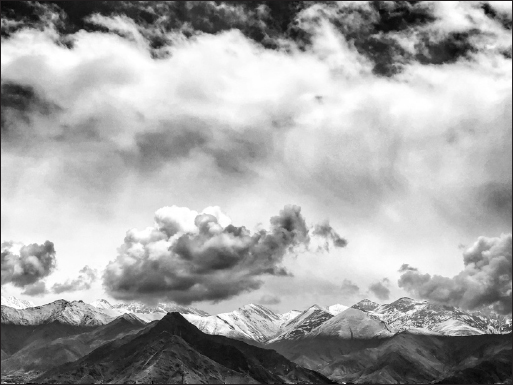
Translator’s Introduction
On January 28, 2021, the Tibetan poet Tsering Woeser launched the first poem of a long poem cycle titled “Notes from a Plague Year.” She did this on Twitter—Twitter being one of her primary social media platforms. I translated that poem the same day, posting my translation to Twitter. The next day, she posted the second poem. And again, I translated it that same day, and again, posted that translation to Twitter. And so it went, each day, she posted another poem, and each day I translated it. I found it an astonishingly intimate experience that seemed to belie the extreme isolation of the time. With each day, the momentum grew, more and more people paid attention to this extraordinary poem slowly unfolding. I had no idea how long the poem was, and Woeser wouldn’t tell me. Forty-three days and forty-three poems later, it came to an end on March 8, making this the longest poem cycle Woeser has written to date, and one of the more remarkable poems to emerge out of China during the pandemic.
As random as the starting date of January 28th seemed, it was no accident that Woeser posted the last poem on March 8. This is a dark day in Tibetan memory, the date in 1989 when China declared martial law across Tibet, bringing to an end the largest pro-independence protests to take place in Tibet since 1959. In the days and weeks that followed, the Chinese unleashed unspeakable violence upon Tibetans. As much as this poem is a meditation on Woeser’s personal experience of the pandemic, it is also a meditation on her experience of being a Tibetan whose country has been occupied by China, whose life has been turned upside down by a foreign power. She draws a strong and unsentimental parallel between the ravages of a biological virus and those of a political virus that has laid waste to her culture. This is a Buddhist’s mind at work, a poet of causal clarity, who recognizes our world as one that is interdependent and in which there is no exemption.
While each poem is discrete, taken all together they are meant to function as a whole. At some point during the translation process, I began to understand the cycle as a landscape of prayer. And while there are actual prayers in it, what I mean by prayer here is that this cycle of poems asks us to care. It asks that we engage in what Simone Weil calls “absolute attention.” Woeser has spent her entire writing life documenting and bearing witness to her country being destroyed. Behind each essay, each poem, you can hear her say, “Pay attention!” She is poignantly aware of loss. And with each poem you can see this incredible labor of gathering what is left of what has been shattered by carelessness and greed. There is much to despair, but it would be a mistake to think that Woeser is without hope. Her poems are substantial—real and tangible—forms of caring. John Berger once wrote, “To put into words is to find the hope that the words will be heard and the events they describe judged.” And this may be one of the most important aspects of Woeser’s writing. She is providing us the opportunity to discern good and evil, and in that discernment decide who we are, what kind of world we wish to live in. That invitation is a fundamental quality of Woeser’s prayer.
As a child, Woeser was sent to Chinese schools to be reeducated. Over the course of many years, Chinese replaced Tibetan as her native tongue. She can still speak Tibetan, but she writes entirely in Chinese. She describes this process as having had her tongue stolen. But even though she writes in Chinese, her poems and essays always return to the bedrock of her Tibetan identity. As such they are uniquely complex poems, they discuss Tibetan reality in the language of the oppressor. But throughout her poems, Woeser sprinkles Tibetan words, forcing her Chinese readers to hold those words for a moment on their own tongue, a reminder of what it is that they are actively erasing. But it’s more complex than that. Those small fragments of language are like prayers within a larger prayer—each singing we are still here. With each of these words, she adds a note below the poem explaining the word, providing the word written in Tibetan. The footnotes for each poem were written by Woeser, and are to be understood as part of the poem itself.
Woeser often pairs her poems with images, and in this case, she pulled them from her daily experience. The images are not illustrative of the poem, instead each image is a fragment of her perceptual experience, neither separate nor not-separate from the poem, they amplify some part of Woeser’s landscape of prayer. I also think she provides them to give the reader a form of breathing space, as something to hold on to. Chinese is already a dense language orthographically, but Woeser takes this density to new heights. Sometimes her lines go on and on and on! And she fills them with heavy theoretical language that can be kind of a buzzkill. But one doesn’t read Woeser to contemplate some beautiful nature scene. I don’t know what to call this form of aesthetic, but I love the fact that before I read one of her poems, I plant my feet firmly to brace myself for a massive wave, and even so, often I am swept away. Reading the work of some poets might be like standing next to a calm lake. Reading Woeser is like standing on the shore of the ocean during a ferocious winter storm.
Notes from a Plague Year
By Tsering Woeser
1.
What does it mean there’s no way to survive this spring?
What does it mean there’s no way to survive this summer?
What does it mean there’s no way to survive this fall?
What does it mean there’s no way to survive this winter?
What does it mean there’s no way to survive March of 2020?
What does it mean there’s no way to survive March of 1959?
What does it mean there’s no way to survive the past?
What does it mean there’s no way to survive the present?
How to live, when one can only live day by day?
Or, rather, is it that, is it just like, we never have lived?
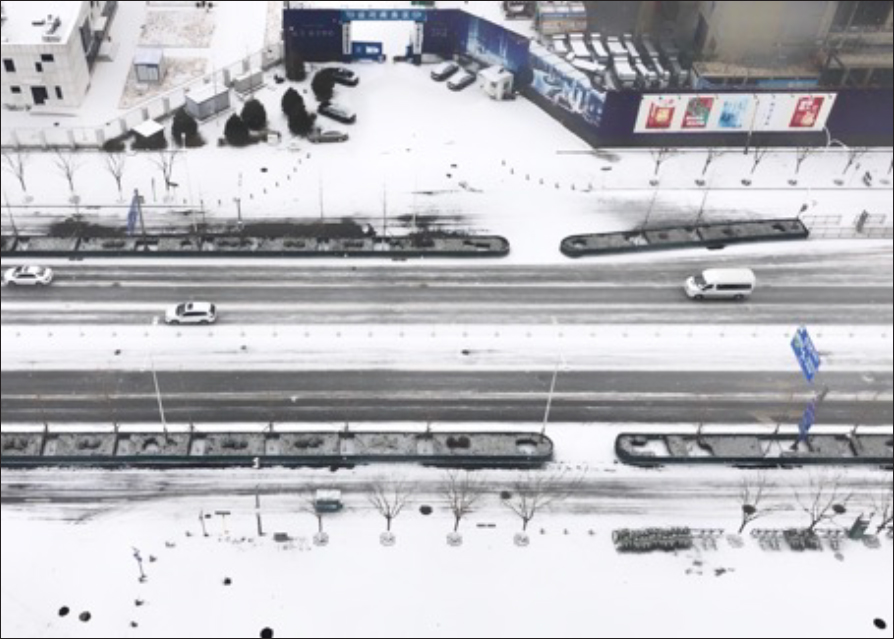
2.
I thought I had been through every eventuality
but I never expected
I would imprison myself for so long
for so long. Yesterday the haze was thick outside my window,
today, it’s sunny for a thousand miles,
the day before yesterday, a blizzard.
I look down from my apartment,
I look to the left, to the right—
of course, it’s not just me confined.
This world that has suddenly revealed its true form
and even the Devil is powerless,
and before I used to think it was all imaginary.
For example, I thought Kṣitigarbha’s descriptions of hell[1]
were only to enlighten those still living,
but it turns out they were of this time, this place.
What I thought before was simple falsehood.
“Give me your hand for a time. Hold on
to mine…. Squeeze hard. Time was we
thought we had time on our side.”[2]
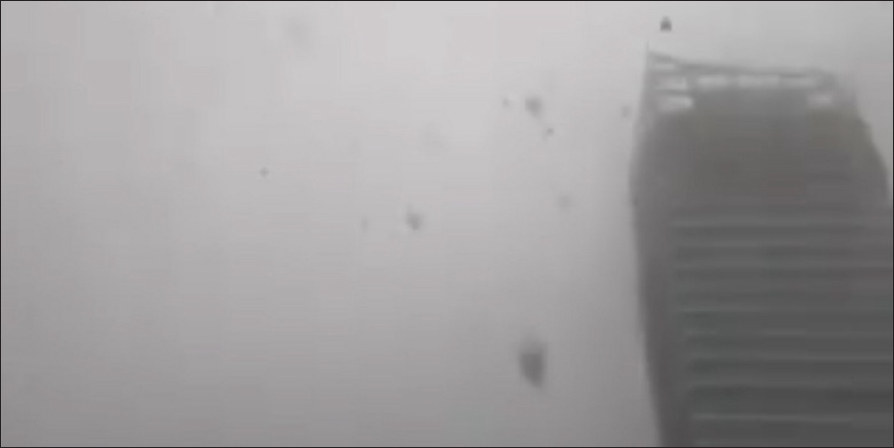
3.
In this moment, I open a sutra.
In this moment, I pray for the innocent.
In this moment, in this unprecedented panic,
people fear the illness—
why don’t they fear the glutton?
Sometimes, destiny incarnates as a plague,
and every time, it’s called karmic retribution.
Every organism is part of its own food chain,
but no matter what one eats,
there will always be questions.

4.
Those of us who don’t eat lu[3] are right,
for if you eat lu you will catch hundreds of diseases.
This taboo is important, for the human heart is insatiable,
its greed like a snake that tries to swallow an elephant.
Yet there are people who are much worse,
those who relentlessly silence the voices of others.
I hope no one is an island,
and, be it near or far, that they achieve true solace.
And today, in Lhasa, it was thirteen-year-old Desel’s
first menstruation.
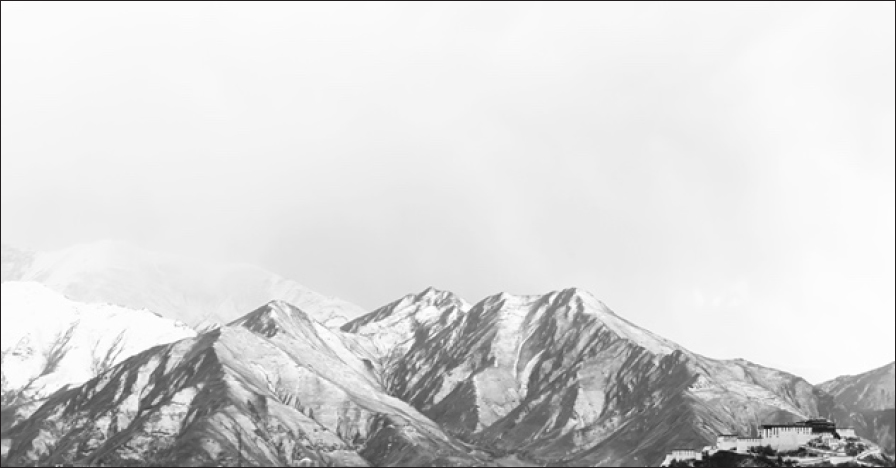
5.
Lhadrum:[4] the Tibetan word for smallpox.
What does it mean—
a divine scattering of flower petals; or
an imprint left by a god?
Then, to what does this epidemic
appertain? It seems
to evade being named metaphorically
for fear it might leak a secret.
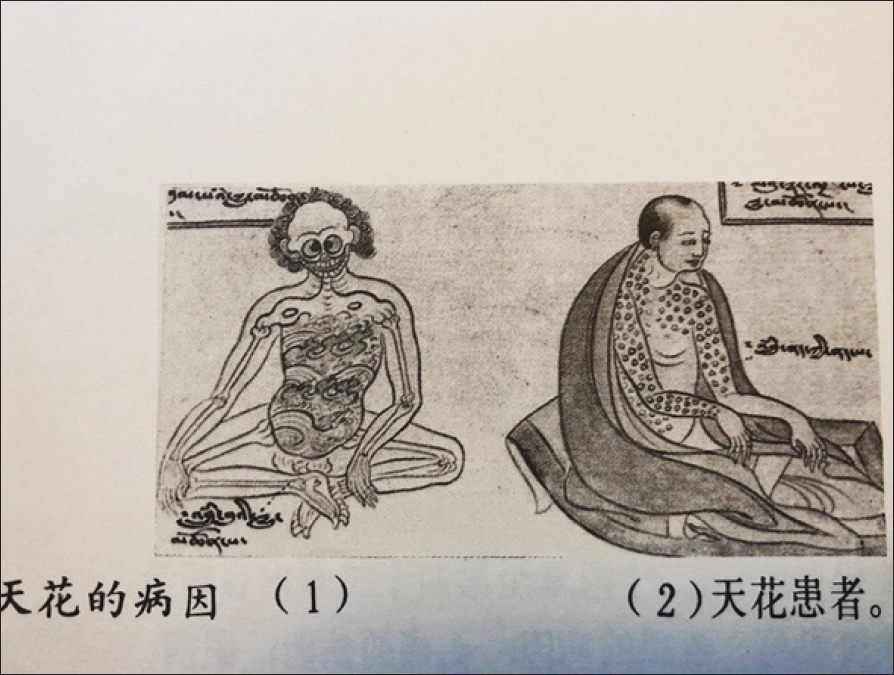
6.
My fierce and powerful Dharma Protector
who was unsettled danced slowly—
but even he has to wear
a pale blue surgical mask.
There’s an N95 with an air valve
falling slowly through the sky,
just like the empty and unreliable words
of the high muck-a-mucks…
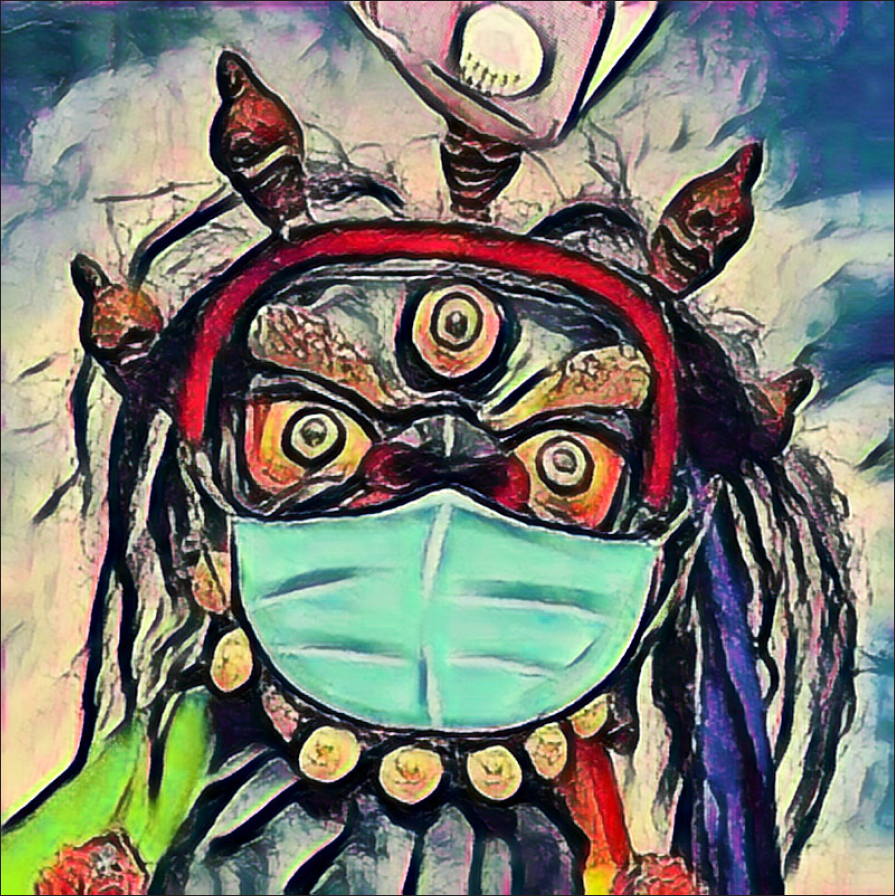
7.
I swear by the blazing goddess Palden Lhamo:
I will bear witness to the scorching sun that punctures
this thangka hanging high in a dimly lit room.
Some profound meaning within awaits
the next person, their unmarked memory,
a meaning that is neither wordless silence,
nor a gradual amnesia.
I swear by the secret visions of the Fifth Dalai Lama:
your appeals to the land of snow—those are my calling.
The fact is this pestilence that crowds around us refuses to disperse,
this ancient punishment, this repeatedly unheeded admonition.

8.
Bodhisattvas are multi-faceted when it comes to saving all living beings.
Vulgar people are multi-faceted when it comes to being selfish.
Two-faced people, even multi-faced people, are everywhere—
all the fruits of their actions
resemble so many cuts and bruises.
It’s really very exhausting to be a bodhisattva.
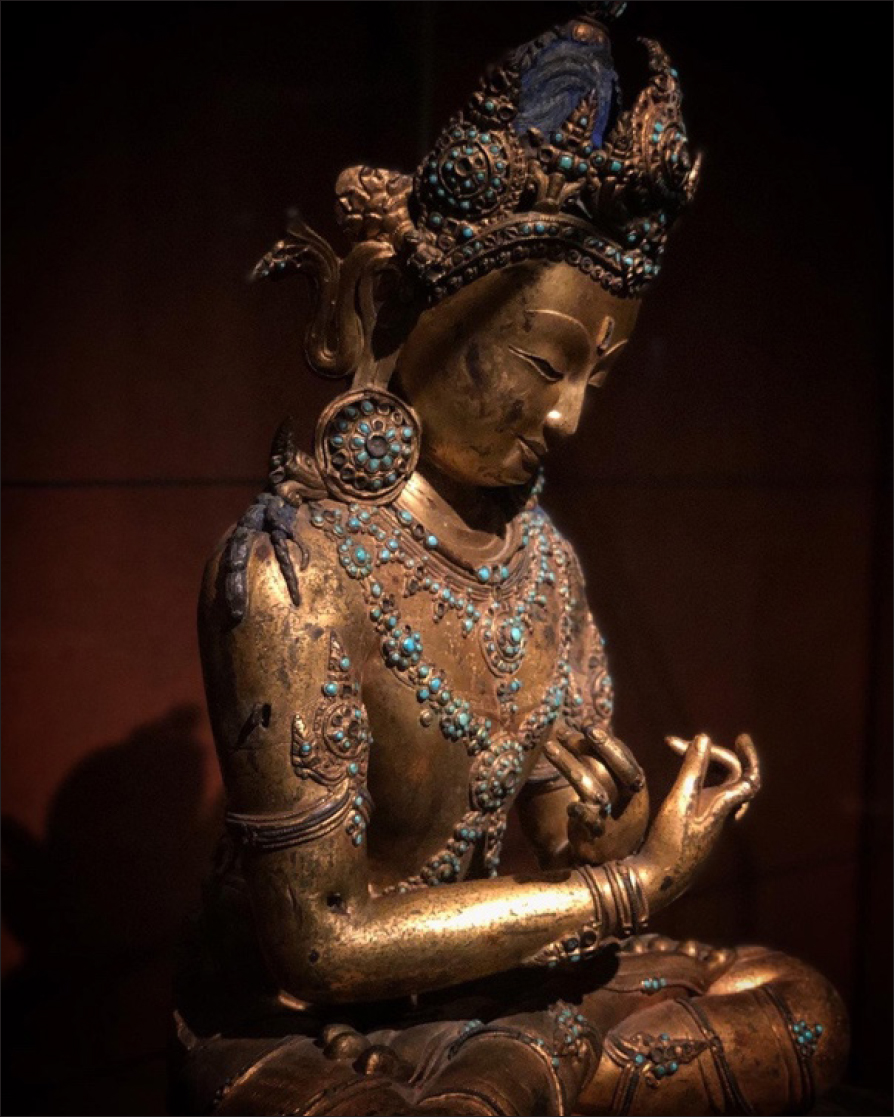
9.
Some people are exceedingly fearful.
Some people are exceedingly not fearful enough.
But fear in all beings,
when buried in the inner heart,
turns into ironstone.
Is this where ironstone hearts come from?
Is harming oneself and harming others the only way?
The appetite of the empire is insatiable.

10.
That cowardice in the bones,
undisguisable, awaiting
an opportunity to strike,
all it can do is torment more and more.
In this interval between blows,
a fiercer virus comes to haunt.
They are perhaps the biggest winners.
They: wearing Nazi faces.
(In my imaginary refuge,
I say what I want but also hesitate.
I carefully and cautiously isolate
to protect my identity.)
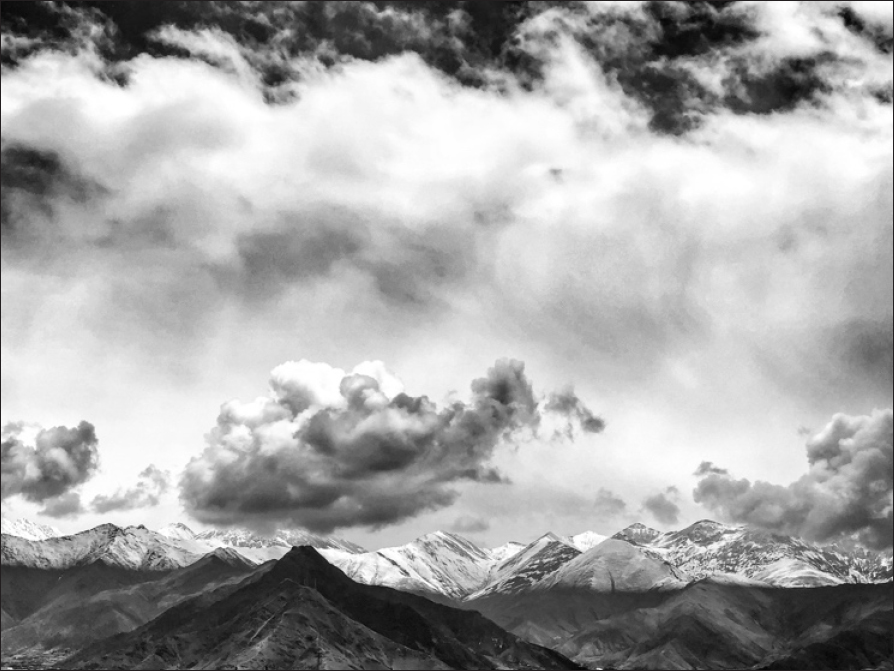
11.
Did you hear it? It commands you to submit.
If not, you’ll be stigmatized as a virus.
Our lives are as disposable as ants. But ants are also one form of life.
If we don’t hide quickly enough, we will mutate.
No, the last shred of dignity must be preserved,
must not be thrown into the cesspool.
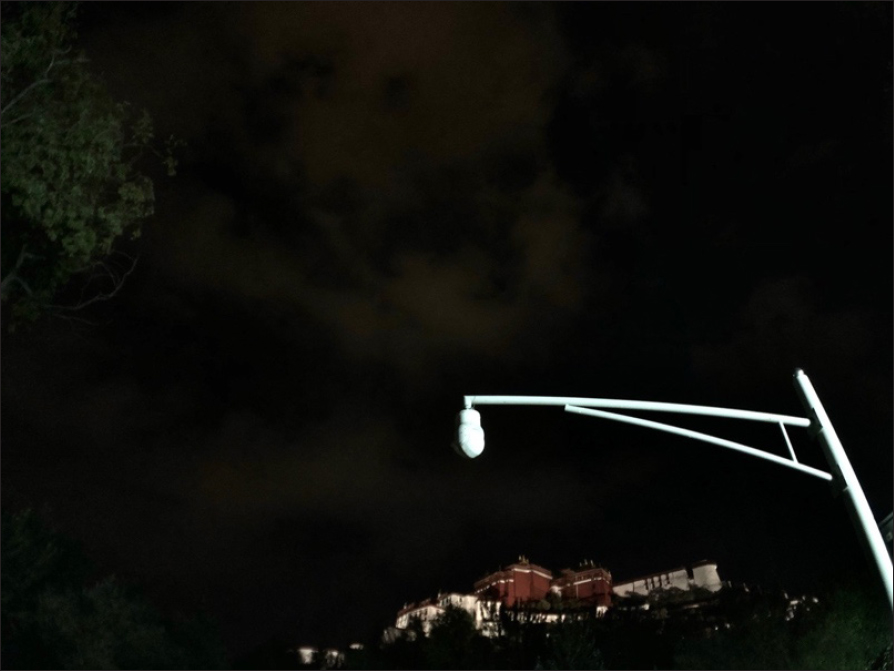
12.
There are two types of boundaries: one geographical,
the other of the spirit.
How to go to and from these liminal realms?
What risks should one dare take?
No one knows the endless torment endured
once you place yourself at these thresholds.
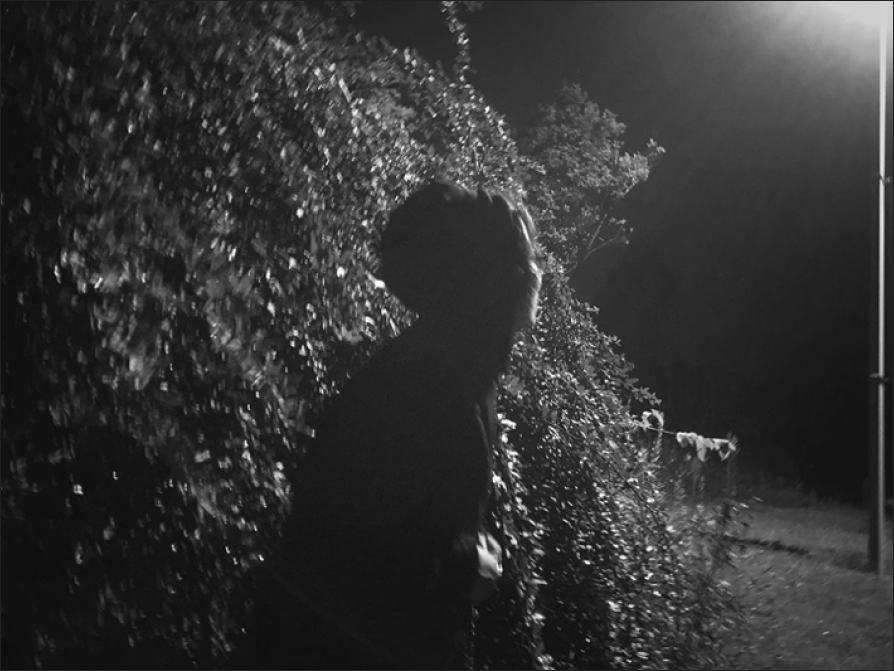
13.
In the silhouette of the bodhisattva still gleaming in her eyes,
in the true words of the three jewels heard in her voice,
in the divine declaration of the mudra she holds to her forehead—
a commitment to a lama.
I want a pair of eyes from a previous life.
It’s like this:
I want to see the former life of the ruins;
I want to see the former life of my own chosen sky burial ground;
And, I want to see the motherland of Sinmo’s[5] metamorphosis.
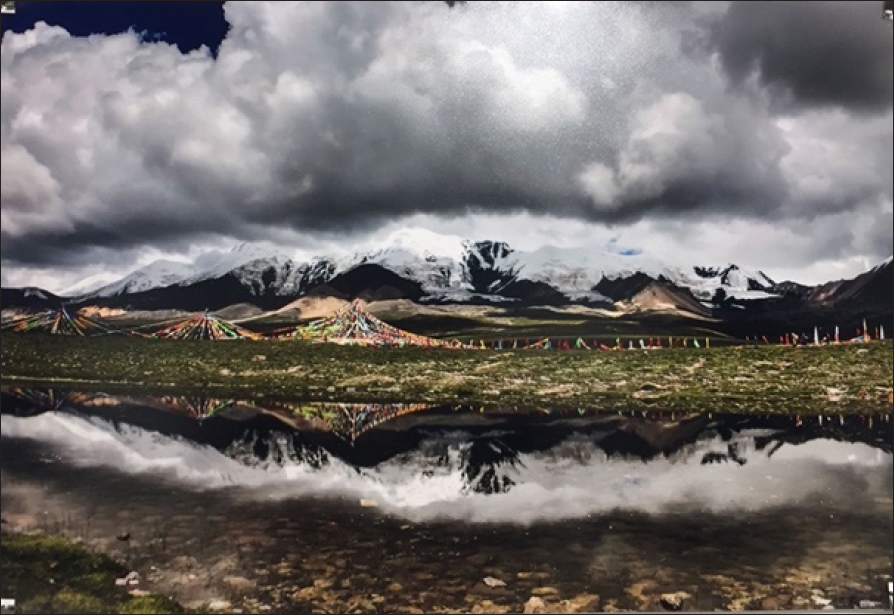
14.
Just three months you were ill.
Just three months for it to spread through your organs.
In just three months you were gone.
And just last summer, we were at the tea house at Sera Monastery
drinking sweet tea, eating bötuk….[6]
I can still see her kindhearted smile.
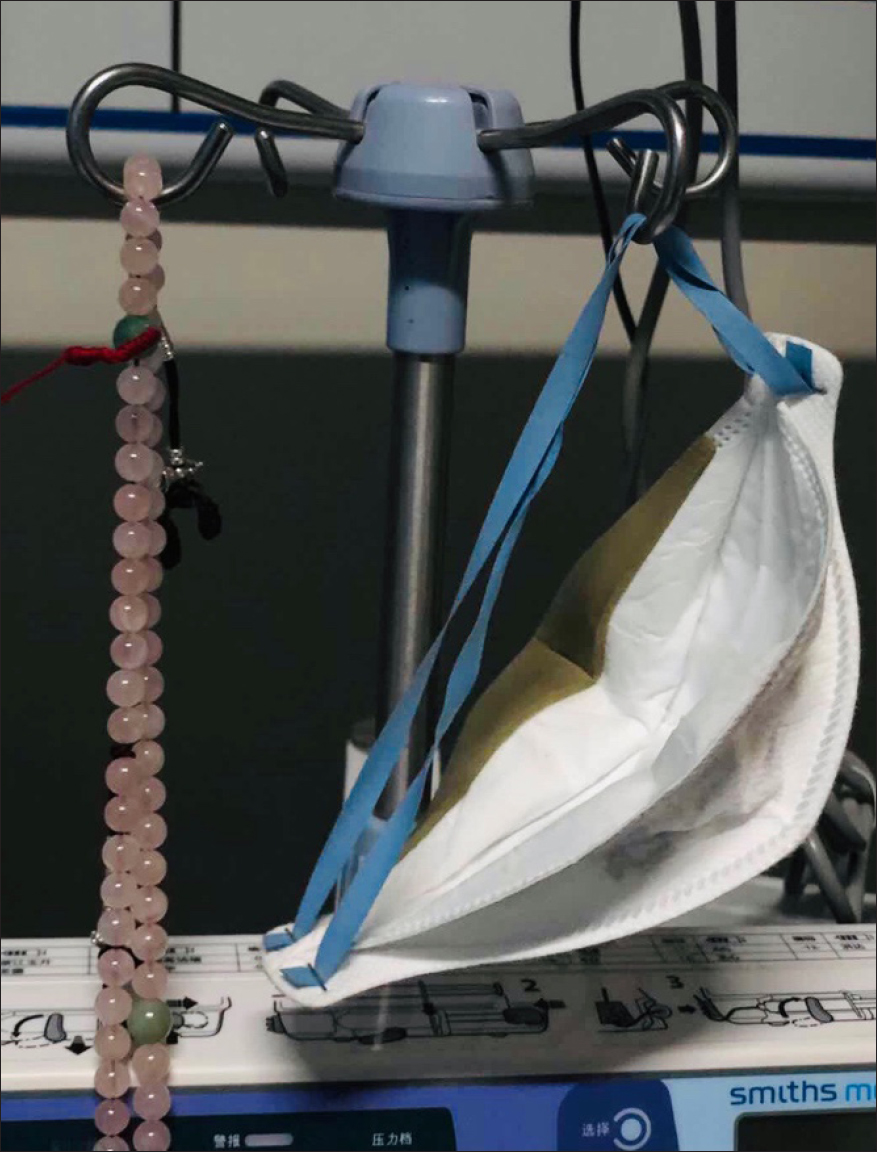
15.
On the giant boulders at Sera Monastery,
on the boulders that encroach the winding kora,[7]
someone used white pigment
to paint several ladders,
large and small, and in no apparent order,
but all striving upward,
to ascend the skies of liberation.
Which ladder is mine?
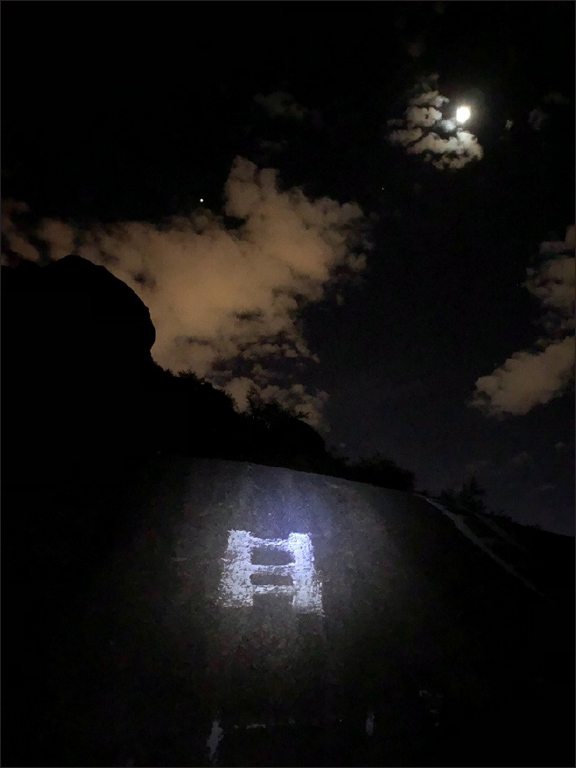
16.
As it gradually grows dark, there in the last rays of
light scattering through people’s homes,
the golden crest of a mandala
suddenly glows with fierce brilliance.
And, as if it were being cared for by a certain sunset,
the mandala reflects an astonishing radiance
that fades in the blink of an eye, dreamlike.
This is a gift, which only belongs
to those who stare at truth for
a long time.
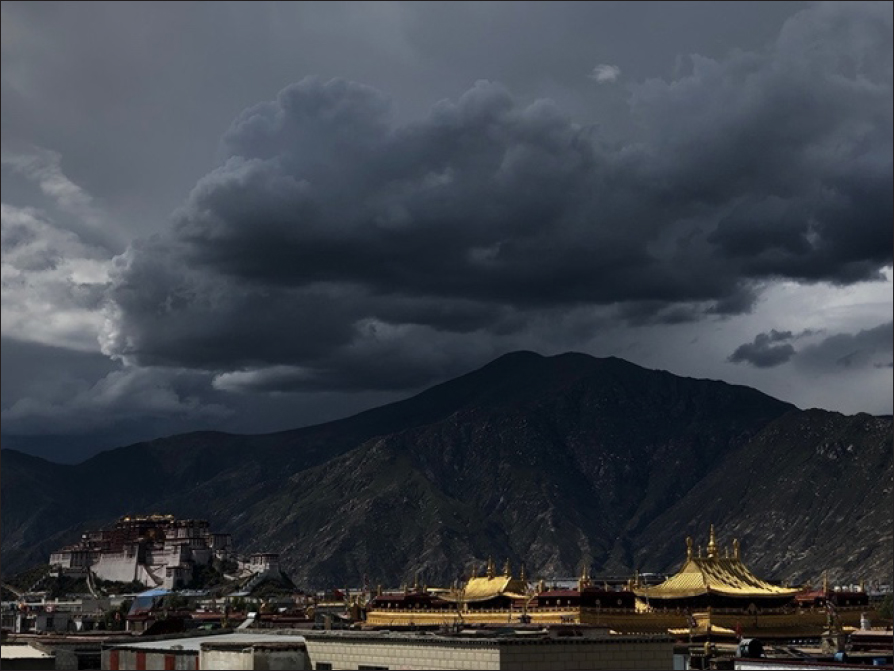
17.
In deep night, the entire city
vague, indistinguishable.
It’s as if I were sinking,
I raise my gaze to the silhouettes
of mountains, but I can’t discern them either—as if
everything were wrapped in the mouth of some beast.
Can there be any sense of security?
This darkness is interminable.
Yes, I am talking about Lhasa.
I’m always, with the eyes of someone who struggles
at great distance, looking toward Lhasa.
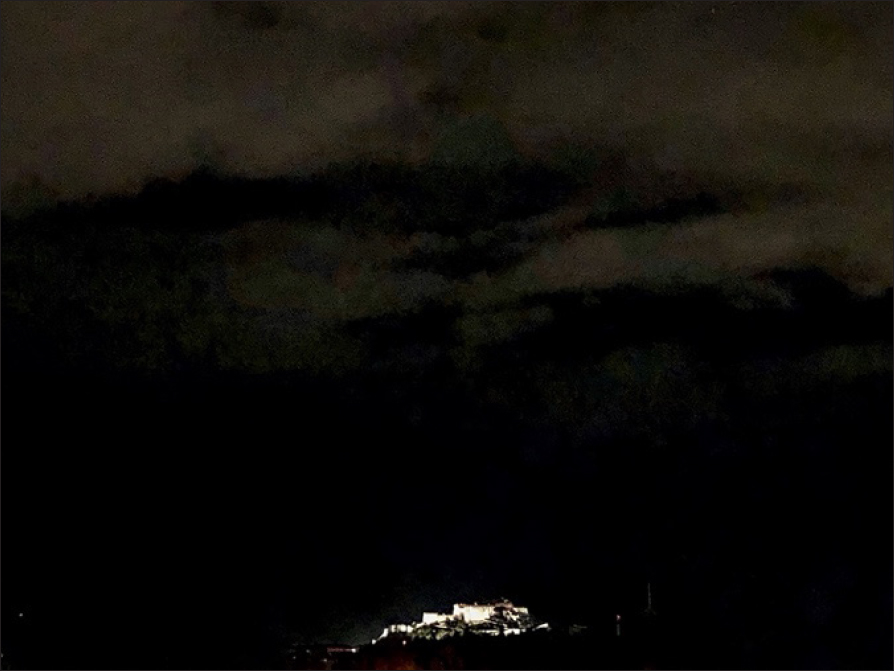
18.
I need a pair of actual wings
to allow my trapped self to escape,
no, no, to fly away.
If one has wings, one has the possibility
of freedom.
Freedom does not pertain to birds with broken wings.
It seems as if I must go against the flow,
fly against the wind, fly back to that land
surrounded by snowy mountains and where happiness
is lost.

19.
Every day, call out. Every day,
the moment you open your eyes,
just call out! Gutturally, instinctively,
more and more urgently:
Medicine Buddha, blue,
crystal clear bodhisattva—
please save us!
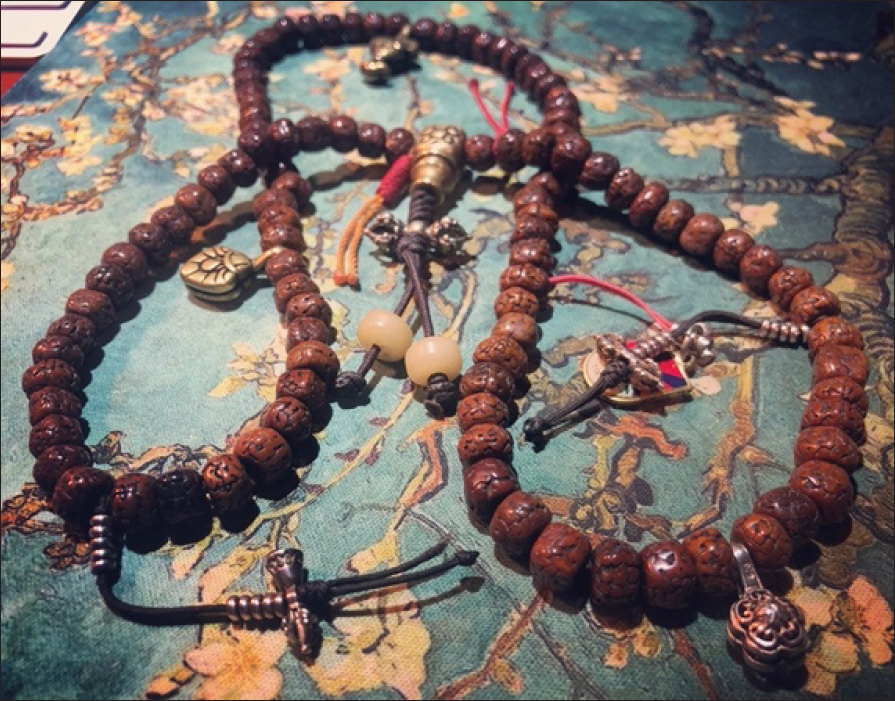
20.
The marginal people of the empire,
the strangers of the empire—
are they also… the enemies of the empire?
Those who are only strong in appearance
but weak at the core need this hallucination.
And yet, a victim’s voice tumbles through from afar:
nyingjé, nyingjé.[8]
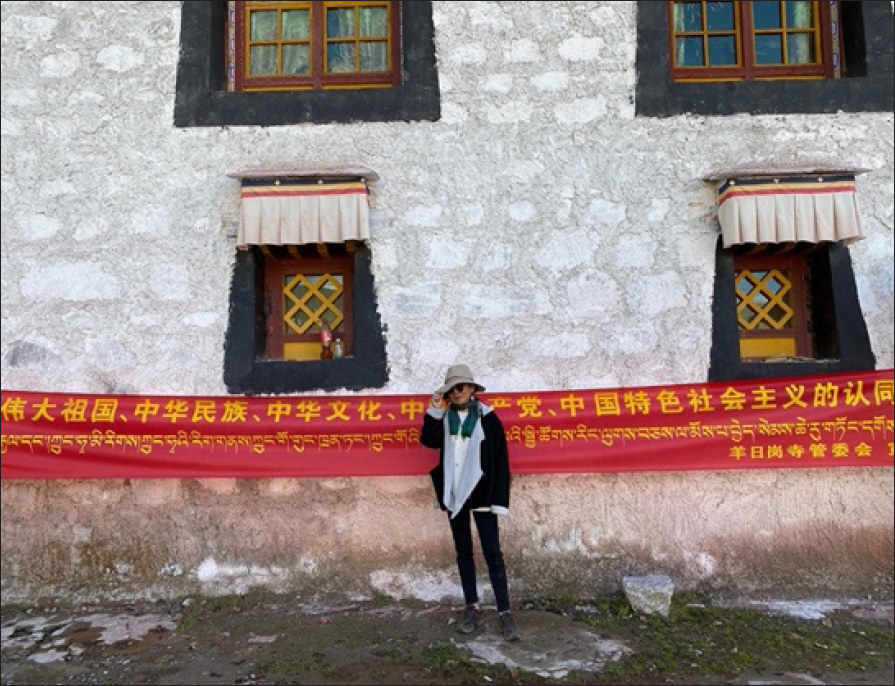
21.
I read an African proverb:
“What the axe has forgotten,
the trees will remember.”
But if the trees are aware
of what the axe head signifies,
they wouldn’t teach it to the handles.
The axe head glimmers
as if it were celebrating the disappearance of trees.
Fine, we will remember.

22.
Near and far there are people
who inherited the beautiful looks of our ancestors.
However, our ancestors failed to endow them with a fearless spirit,
no spirit-gene passed on to every descendant.
This is sadder than the sum of all other sadness.
They incessantly capitulate
to these parasites, these invaders.
Their ambition and selfishness grow with the years.
The beautiful looks of our ancestors are in vain.
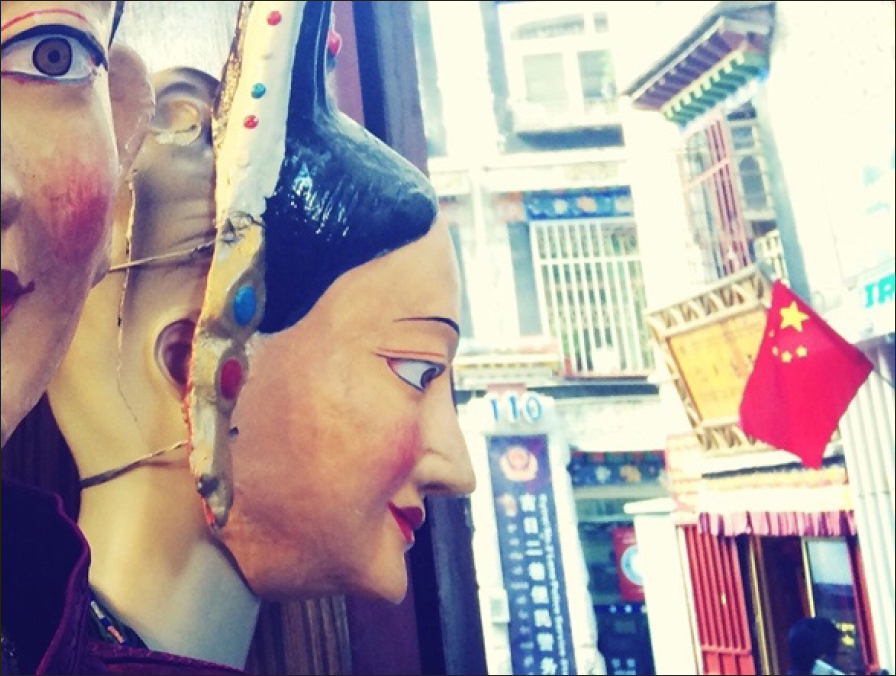
23.
Weeping with grief like this, I shock even myself.
I weep without stop, not only for the dead
but also for the living. Over the course of a single night,
agony disfigures her, leaving me panic-stricken.
How will she live in a future without this loved one?
I almost couldn’t make it through the year when I lost my father.
A sudden space into which I fell in self-inflicted anguish
painful to this day, truthfully, it hurts
more and more.
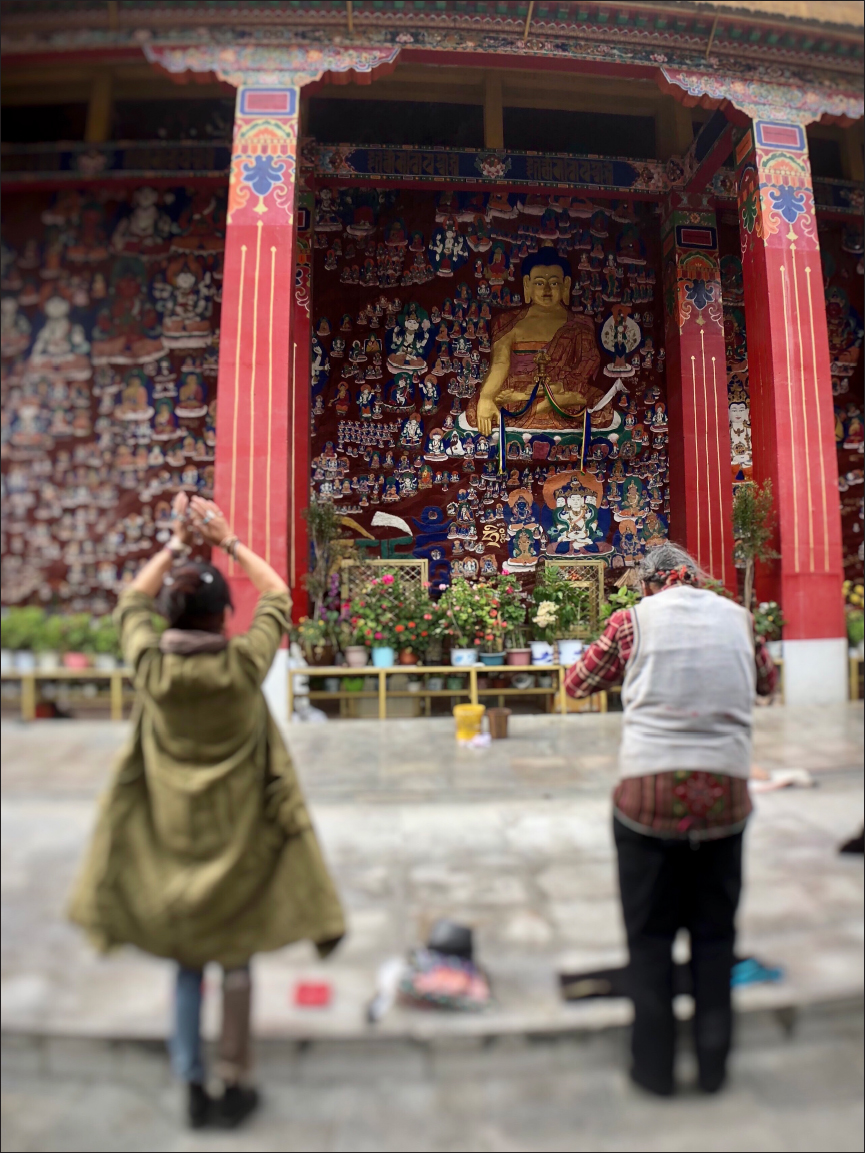
24.
“It seems we’ll be trapped here.”
“Trapped here?”
“Yes, trapped here.”
“What should we do?”
“I think you should leave. You absolutely must leave.”
“That won’t do, I want us to stay together.”
However, in addition to the virus,
they themselves also carry a virus.
They’re like a species from a city of plagues.
They have a human face,
but their bearing is not normal.
They are not normal human beings.
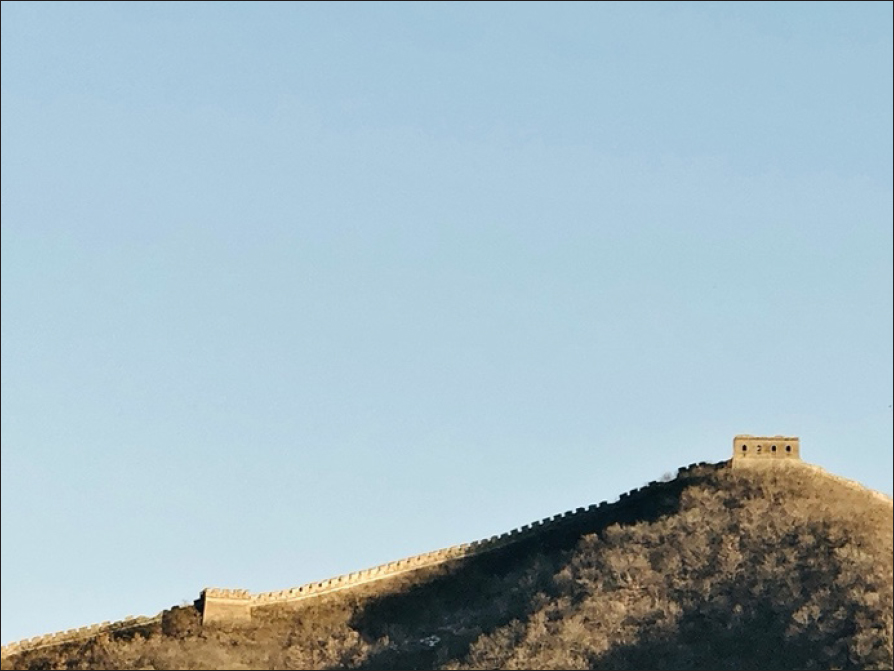
25.
I might as well eat a large piece of lala[9] soaked in buttermilk tea,
my tastebuds suffused in the flavor of yak,
green grass, masticating—milk, stone-like, dry cheese.
But this month, I won’t even dream of its meat.
This is the fourth month of the Tibetan calendar,
to abstain from meat is good for body and mind.
And nor tonight will I be concerned about human beings—
in all directions, people’s teeth are sharper than blades.
How about this: all living beings leave each other alone,
it’s important that you and I, respectively, get a good night’s sleep.
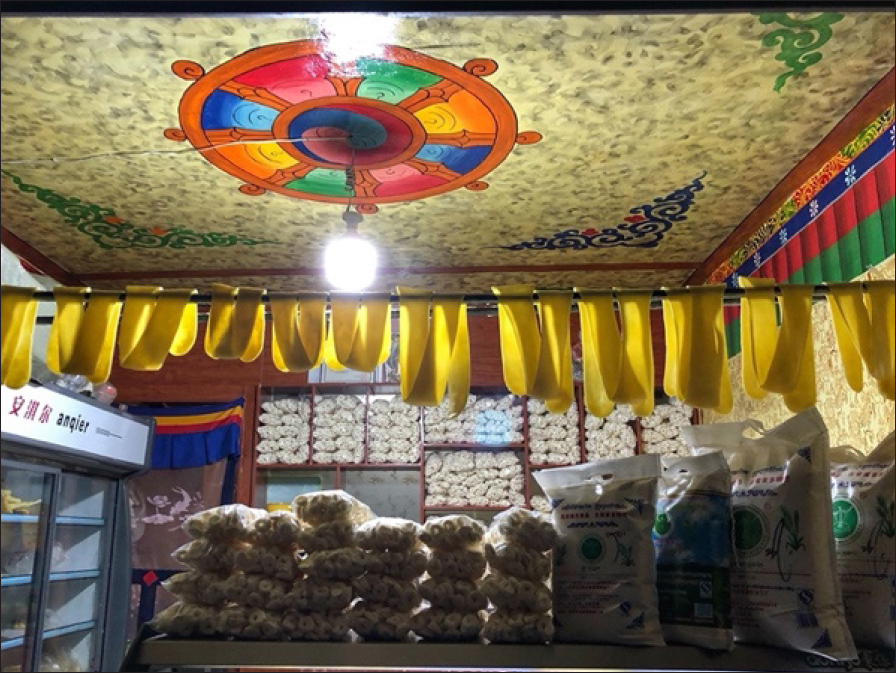
26.
The withered tree Ian[10] found
on his island
returns to life.
Under the night sky, the new leaves
of this prophesied tree
twist in the wind.
Those white leaves,
those leaves inscribed with names,
twist in the wind.
Those leaves inscribed with Tibetan names,
those leaves cut from paper,
twist in the wind.
Those are the names of 165 Tibetans.
Those are 165 Tibetans who sacrificed themselves.
The predecessor of wind is flame.
The fire ignites again.
We prostrate ourselves,
committing our voice to the wind: “Lama Khyeno [11]…”
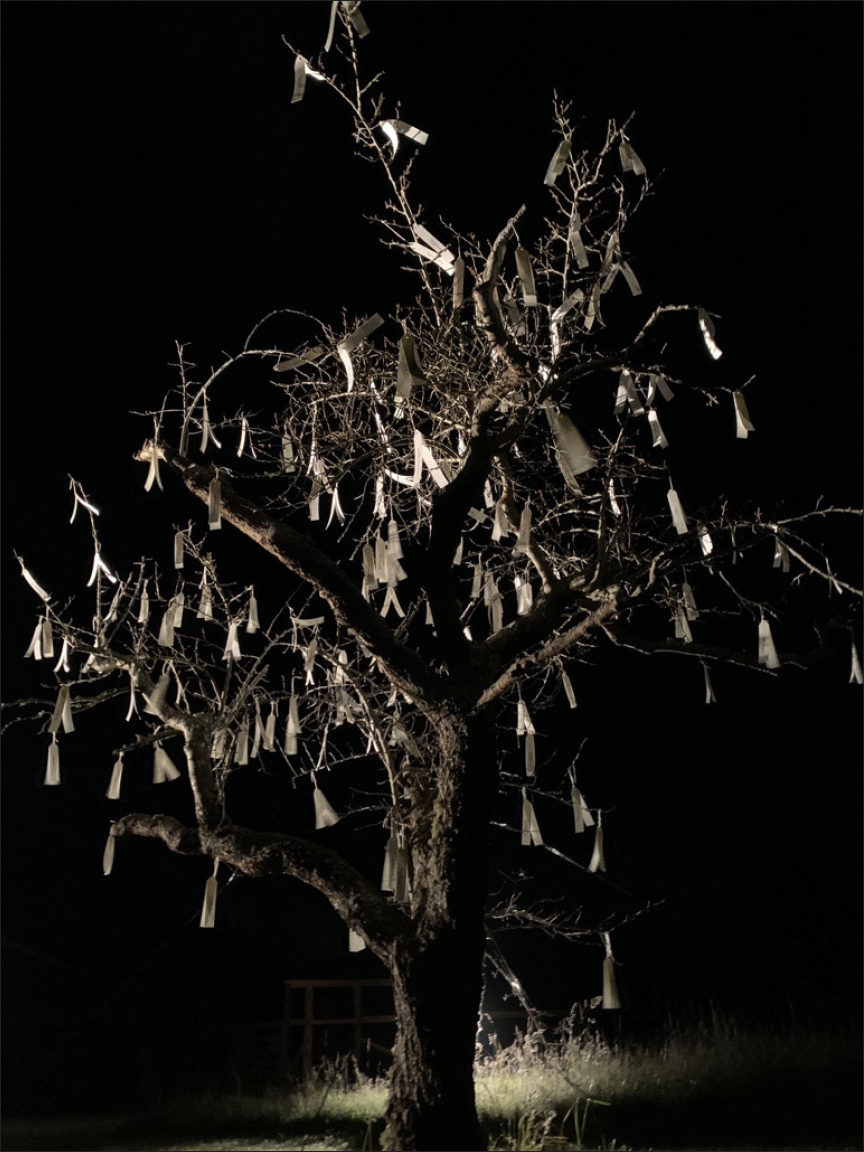
27.
On a summer evening when the epidemic has not yet ebbed,
across a land turbulent with public sentiments,
only the gluttons are at ease.
Certain beings verge upon extinction,
each with their own unique appearance.
An unknown stranger
unexpectedly sends me a message through Twitter:
“Regardless of how you pretend,
you cannot change
your red, revolutionary genes.”
Sleepy me, suddenly feverish,
as if my secret identity has been revealed.
I laugh until my eyes stream with tears.
I lift my glass in one hand,
but I’ve already finished my cold beer.
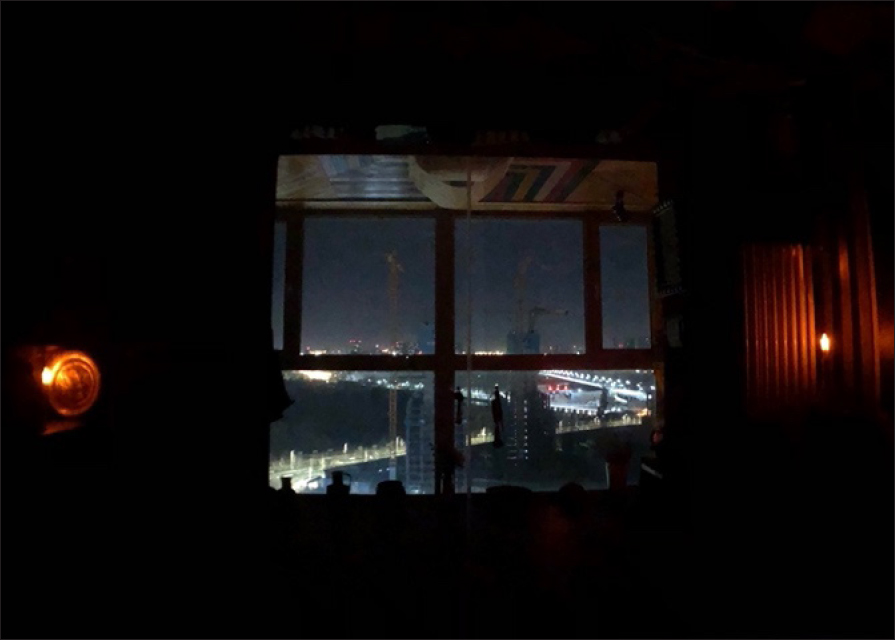
28.
Names are so important.
I ask you to remember our names.
Allow me to remember your names.
This is a basic equality.
After all, our skies hold the same wind and moon.

29.
…erase the evidence, quickly
recreate the scene so that it looks plausible.
And when they let you go, they’ll point it out to you,
so graciously, so condescendingly,
they’ll point to this and that.
And all at once, you fall in love with what you see,
more like paradise than paradise itself.
You can’t help but cry tears of confusion
as you start singing that heroic Mongolian song
trapped within the red musical opera:[12]
“From the grasslands to Tiananmen Square,
lift a golden cup and sing a song of praise,
fine wine so fragrant, fresh flowers blooming
our voices soaring from our chests….”
Ah, our vacuous chests….
One by one, the lost souls….
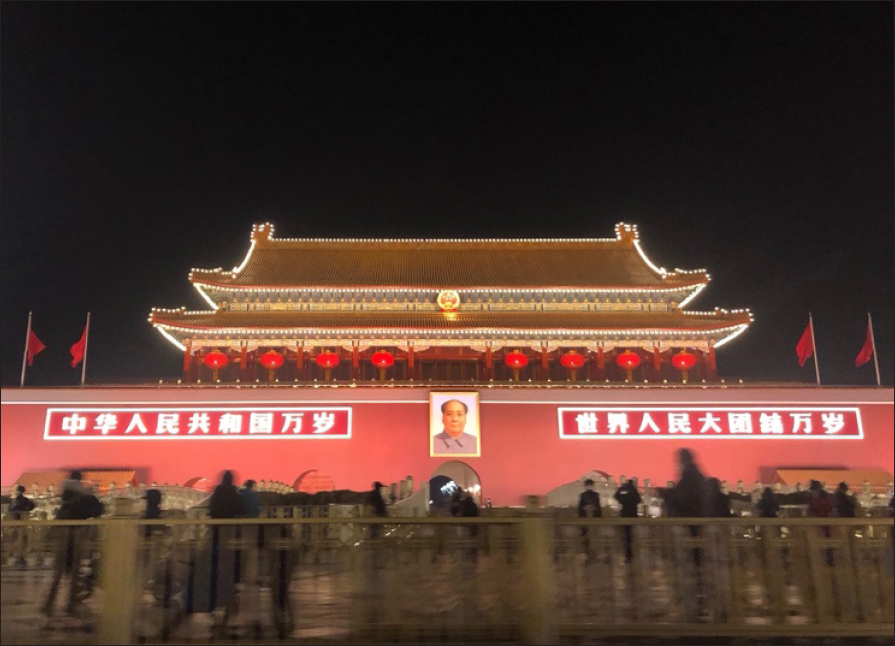
30.
Half the year, you live in the capital of the empire;
the other half, you live at its edge.
You’re either an immigrant or an exile.
But the space of this alternation is increasingly cramped,
and the time in your hometown grows shorter and shorter.
You’re powerless and at a loss for what course to take.
It’s as if you live by some fluke,
passing days by luck.
Your only hope: to be forgotten by the empire.

31.
“Two-faced subjects; you whose lips say yes, but hearts say no; are you not ashamed?”
“Traitor; ngolokpa;[13] you are not allowed to associate with her.”
“Panda; Big Brother… can you see hell?”
“And you, don’t mention aristocratic blood, your obsequious looks are so humble.”
“Look at this barren land, this barbaric land. They are lucky we liberated it.”
These men in Mao suits condense the air with their loud declarations.
Ugh. You continue to repeat their language in your heart,
replacing the earlier whisper with this sentence: “It is you who are the barbarians,
I’m afraid it is very difficult to extricate yourself from the three lower rungs of the six realms.”
You can’t help smiling. But they think your smile is one of approval and gratitude.
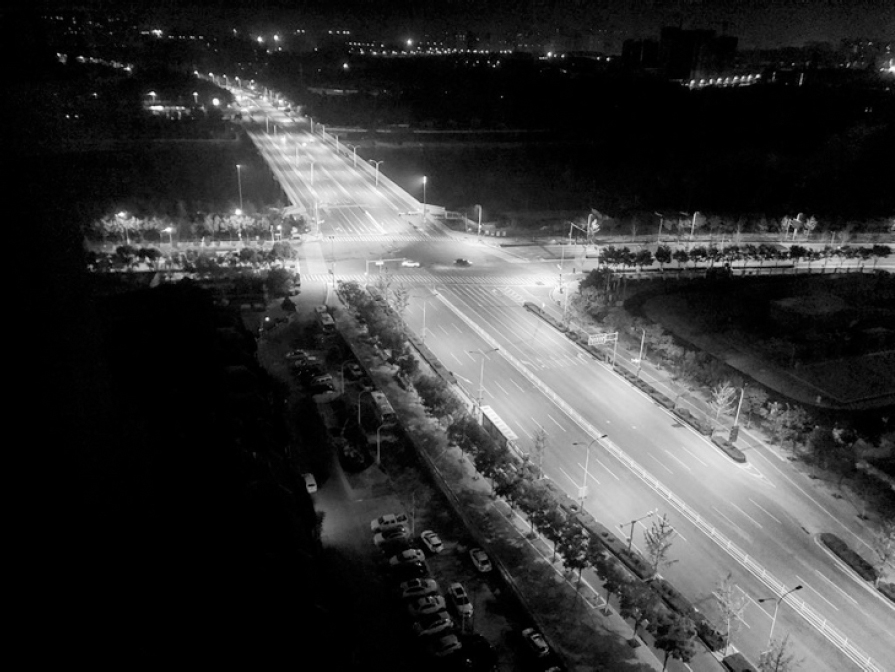
32.
No, we have no dome of sky, all we have is a roof.
And this roof, it’s too huge, it’s too low,
it completely obscures the dome beyond,
as if it wants to become the dome,
a night-dark dome darker than the darkness of night.
Truthfully, there is just this one color,
I haven’t added any wash of ink. It surrounds us.
We have no choice but to accept this roof
as a dome,
to accustom ourselves to this darkened life without daylight,
to such an extent that when I encountered the word “dome”
I suddenly burst into tears.
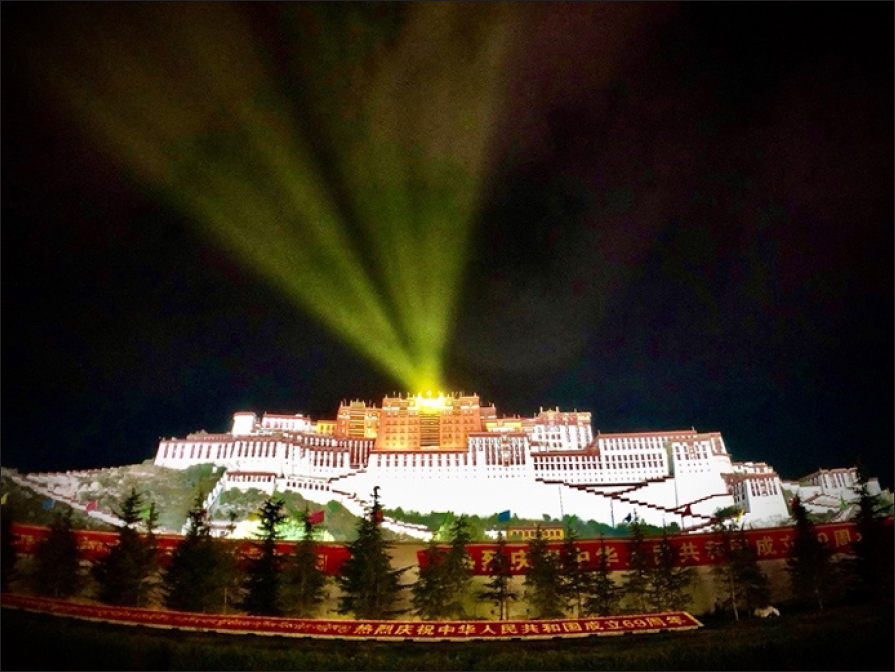
33.
Will jade be completely incinerated
in these abnormal flames raging from every quarter?
Beautiful jade perishes so easily in fire,
whereas stubborn stone does not.
Stubborn stone: unyielding, self-righteous,
an infallible expert at assisting fire.
But jade, an exquisite thing,
is ultimately destroyed by stubborn stone.
Stones of the so-called other mountain
won’t stop striking jade.
My ancient homeland that only yesterday fell to enemy hands
is already strewn with these horrible, stubborn stones.
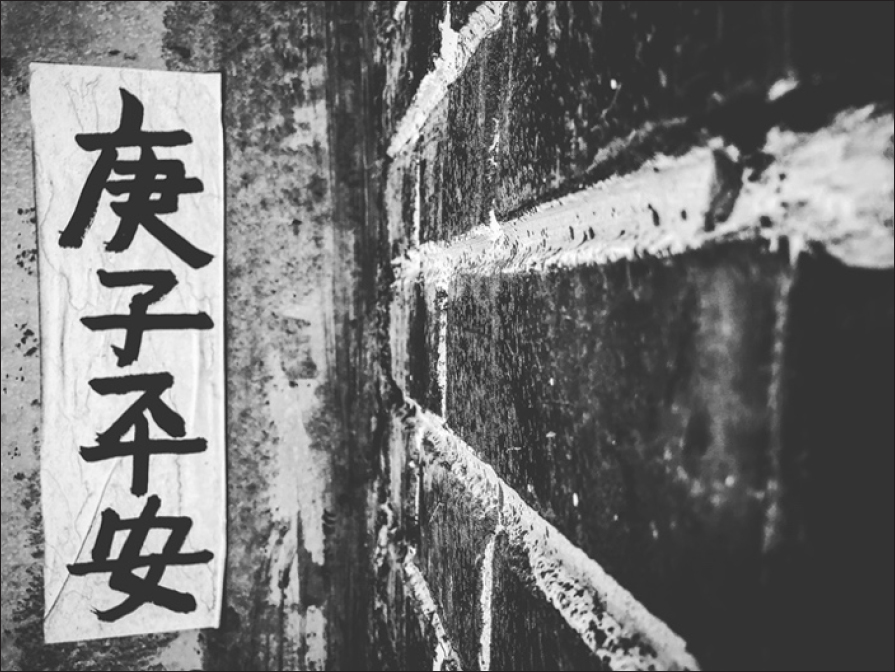
34.
Under the scorching sun, I walk the increasingly clamorous streets,
walk through a throng of people whose faces are covered with masks.
On both sides of the street, there must be other people
hidden in the houses, hidden in shadow.
Sometimes, one of them leans against a window
and quickly peeks out, or perhaps stares for a longer time.
The way they lean deeply, it’s as if they’re hesitating
in their desire to fall, even more as though they’re covertly calling for help.
I almost lose my voice, praying for Guanyin, she who hears the world’s cries,
to open her arms in embrace… after all, this is something
a Buddhist must do…
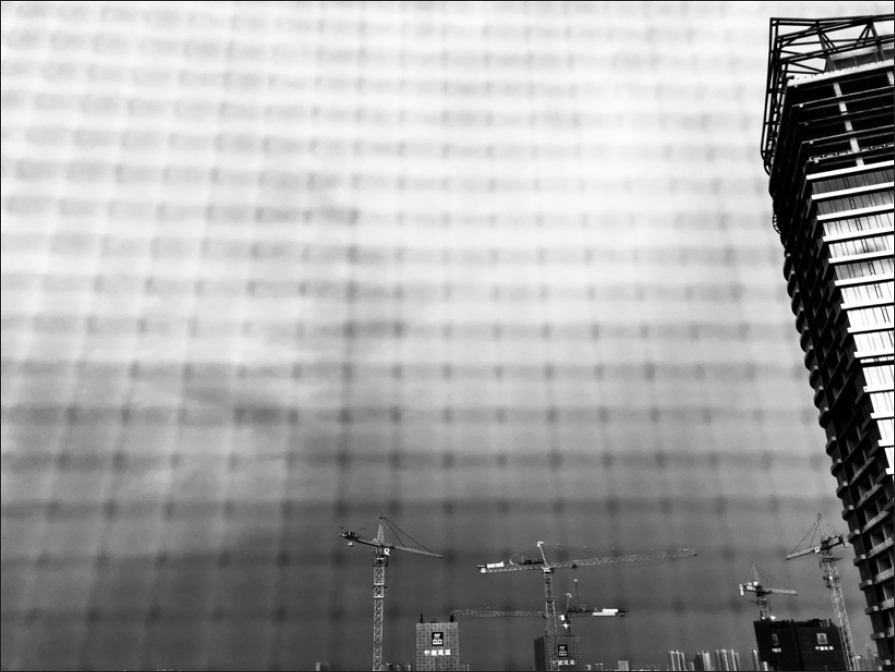
35.
I find myself feeling more and more ill at ease with each passing day:
I feel deep affection for and depend dearly on loved ones,
some in my native home, some in foreign lands.
How might I perfect the art of replicating myself,
and how can I evade the uncertain dangers lurking in every corner,
so I can spend irreplicable time with each person I love?
In my heart, I’m reluctant to part with anyone.
It’s as if I’m bathing in tears.
Our time in this life grows shorter
and shorter.
I can’t help it, I go to sleep later
and later,
and the amount I sleep grows less
and less. It seems
this is the only way we can prolong our being
together.
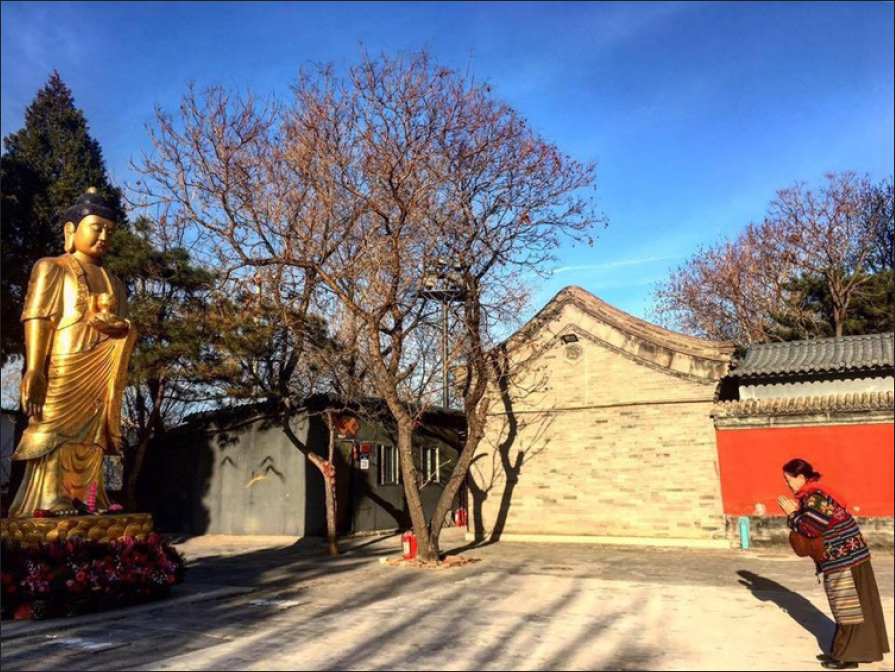
36.
How can everyone’s memory actually be restored?
For instance, a person who can’t help but forget
is given a treatment with unknown consequences
in some politically correct ward.
In the slow process of recovery,
sometimes memory is unimpeded,
sometimes it’s choked.
Then it unleashes—a mountain torrent
flooding people’s hearts with fear,
or even more, it’s a murder in a public square,
a terrible truth collectively witnessed,
which is then selectively forgotten again.
In the end, there are those who can speak out,
but their will to live has already been destroyed.
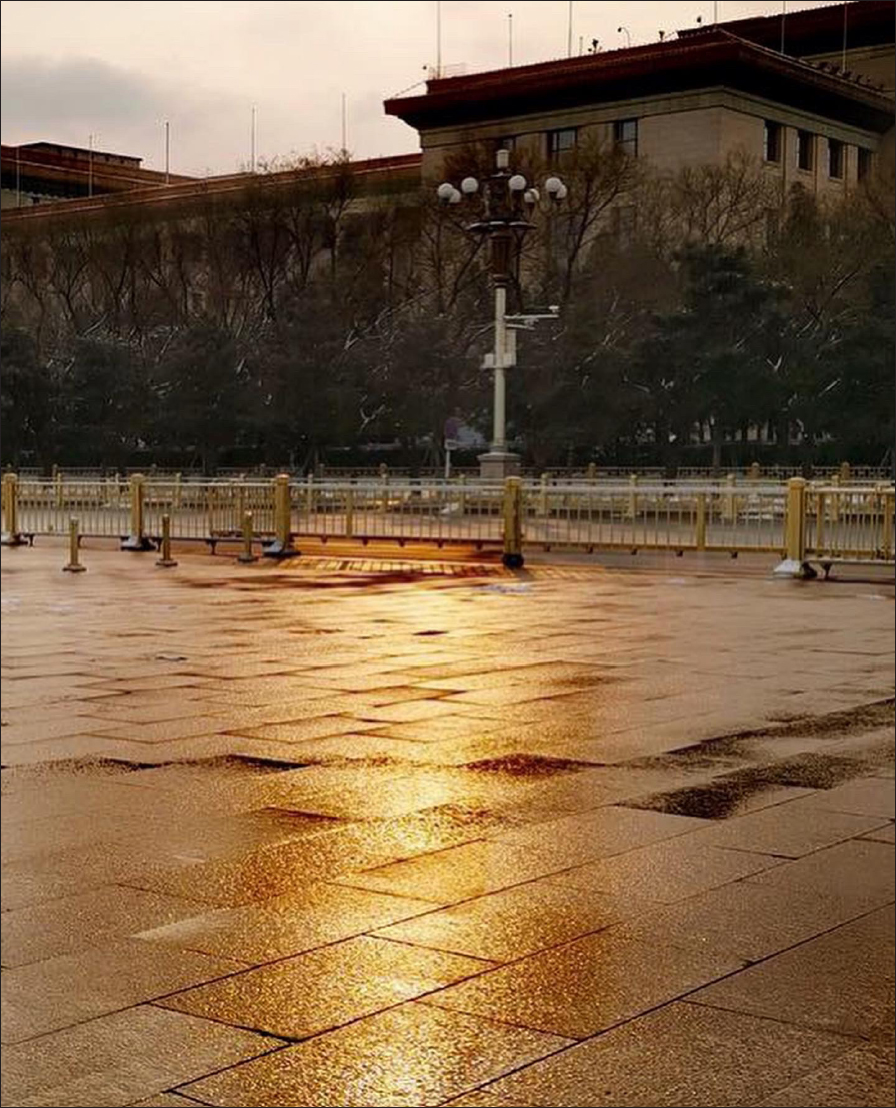
37.
To write a good poem and to exist as a person
of a certain fixed identity are almost of the same degree of difficulty.
Naming is a foremost question—
Are you a “Tsang person”? Are you a “Tibetan person”?
Are you a “Bödpa”?[14] Is your homeland “Xizang”?
“Tibet”? or “Böd”?[15]
It seems snow is falling, heavier and heavier,
hiding the road from view.
It seems fire is burning, brighter and brighter,
hiding the sky from view.
It seems the coldest moments are when snow melts,
and there are times when even tears can freeze.
When extinguishing a fire, it is not just skin that burns.
Even from far away, far, far away,
the Sixth Dalai Lama’s poem of enlightenment is so comforting:
“The black traces of letterforms
wash away with water and drops of rain,
but what remains unpainted of the inner heart
can never be erased.”
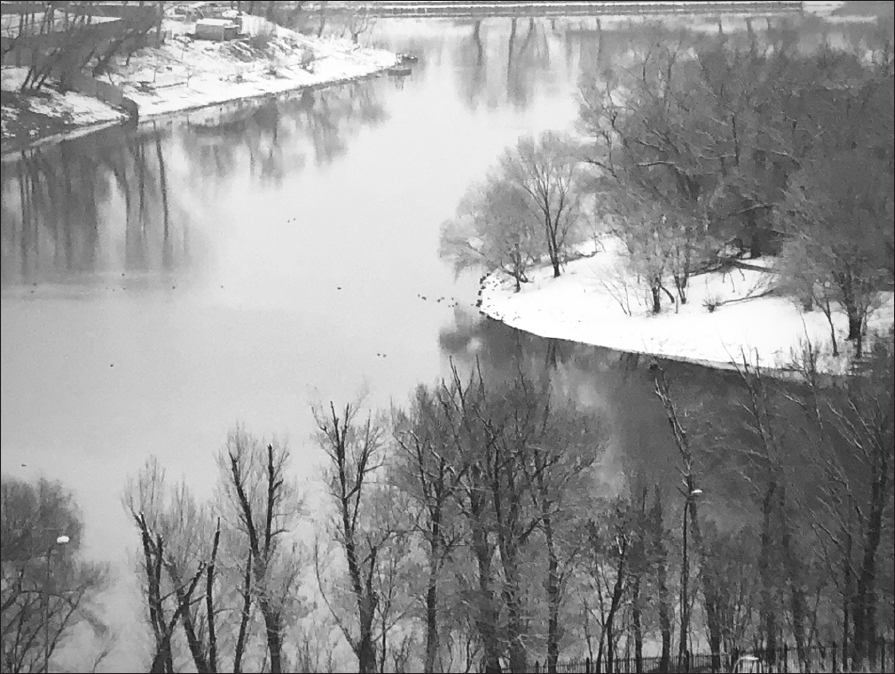
38.
It’s hard to believe he’s been dead so many years,
his face fading like the colors of an old photograph,
and that I … I’m now the age he was when he died.
This hallucination … I thought I was still in my youth.
This hallucination … thinking I could control my destiny.
Hallucinations: I’m afraid these kinds of hallucinations are indispensable.
This morning, I’m pulled from sleep by the voices of strangers:
“Hey, what time do you plan on dying?”
“What! How could you say that?”
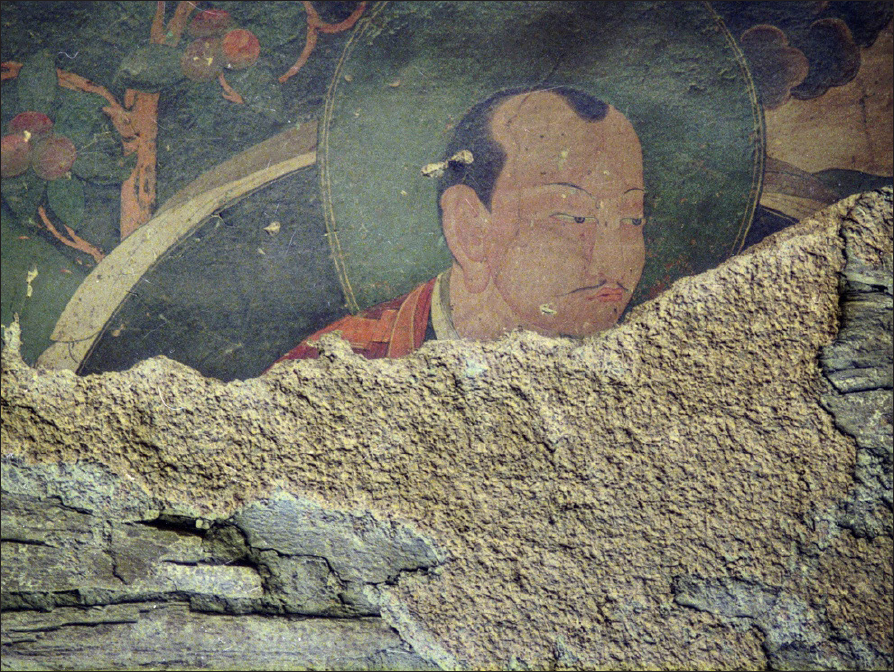
39.
I am willing to be this kind of collector:
a collector of irreparable photographs split apart;
a collector of embers that cannot be extinguished in the dead of the night,
saving them for the coldest tomorrow to light a fire;
a collector of cries of the missing who dared not voice their grief,
that perhaps therein I might find evidence of a previous life;
a collector of secrets that cannot be spoken, that are without solace,
and that, as they pass through the abyss of humanity,
might be a path to salvation.
But I am not willing to collect stupidity,
those who persistently reject wisdom,
that smug stupidity that is more incurable
than the manifold ways of doing evil,
and so difficult to forgive.
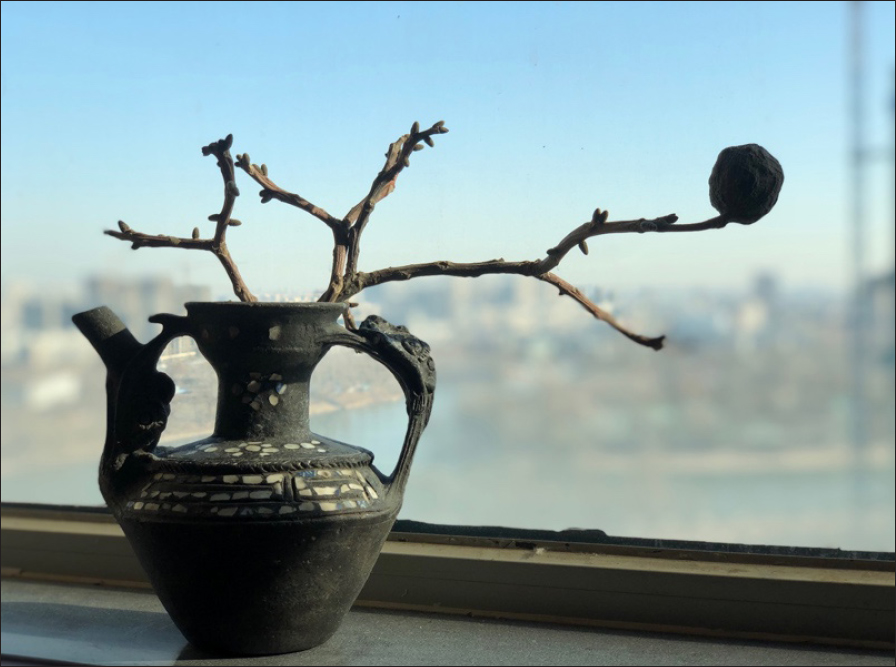
40.
Suddenly, Lhasa feels more like a historical relic—
wreckage, ruins, and abandoned sites.
“Repair the old, so it looks old,” they say.
Dig, dig, and dig; demolish, demolish, and demolish;
repair, repair, and repair; conceal, conceal, and conceal.
This place becomes a giant construction site.
But how can they repair the old so it looks old?
If you demolish the old, how can you erect something new?
What you erect anew is
a false substitute.
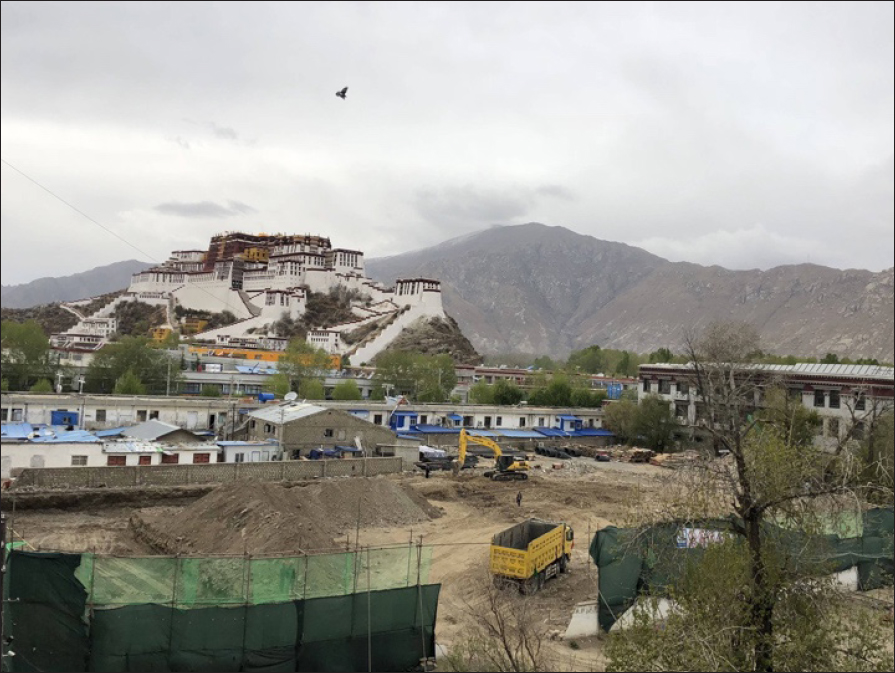
41.
Remember that day in early autumn, midday
on our pilgrimage around the Drepung monastery?
A woman who sat on the bank
of a mountain stream gently
dipped a few sheets of shining copper
again and again into the flowing water.
Dipping them, lifting them.
The copper, engraved with images of bodhisattvas,
engraved with words of bodhisattvas.
The copper pieces, bound together
with sturdy twine, resembled a brush,
writing a prayer on its water-paper.
Each copper sheet was a printing block
that stamped its impression into the flowing water,
its images changing in the blink of an eye.
Imprinted with the images of bodhisattvas,
imprinted with the words of bodhisattvas,
this water snakes through this world of dust.
And this: those who cannot see
how the water is stamped offer a futile smile.
And this: I, who can see, believe without doubt
and so the copper’s prayers reveal.
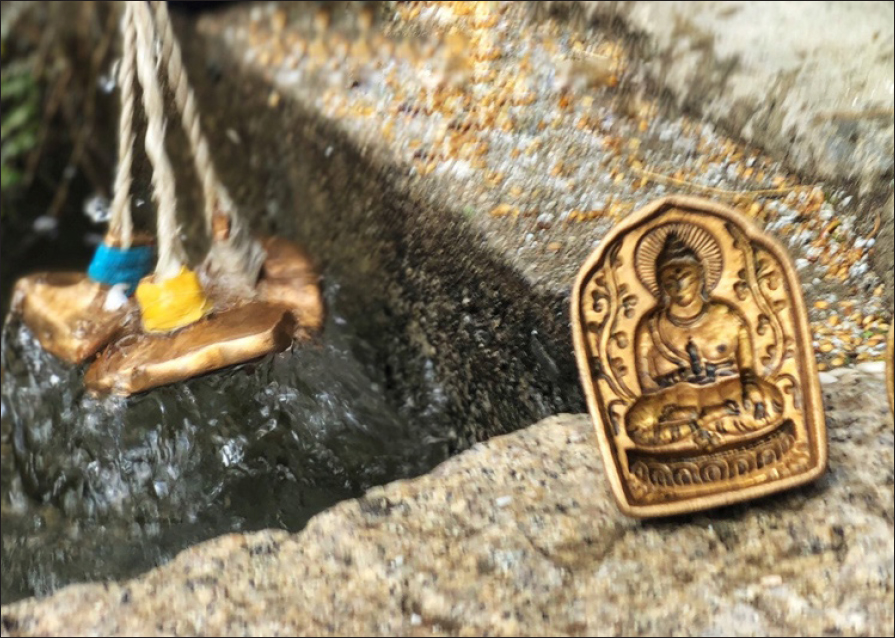
42.
I write place names into a poem.
I write place names of my native country into a poem.
I write place names of my native country that have been lost into a poem.
I write place names of my native country that will essentially never be lost into a poem.
“Magical and real,” she says in a loud voice.
“A refuge,” she says softly, and then makes this association:
The antonym of utopia is to have a place, the Shambhala[16] of the Kalachakra.
A teardrop is real, but not magical.
I have already exhausted all my powers to be brave. But in this moment,
when the five poisons permeate the human world, I must fill myself with confidence.
Uttering the four great vows, Gyalwa Rinpoche’s[17] voice reverberates—
I ask you to listen, for a better future life.

43.
Even though our impermanence will transpire as expected, until our last
breath, we must speak the truth, voice the truth, utter the truth.
Not one person has the right to bully another sentient being.
Not one element of causation leads to an unrelated consequence.
Please shelter the candle’s flame in the wind, it is our last hope.
Please treasure empathy, while it changes quickly it does not change too much…
—Written during the pandemic, 2020, Beijing, Shanghai, Tunxi
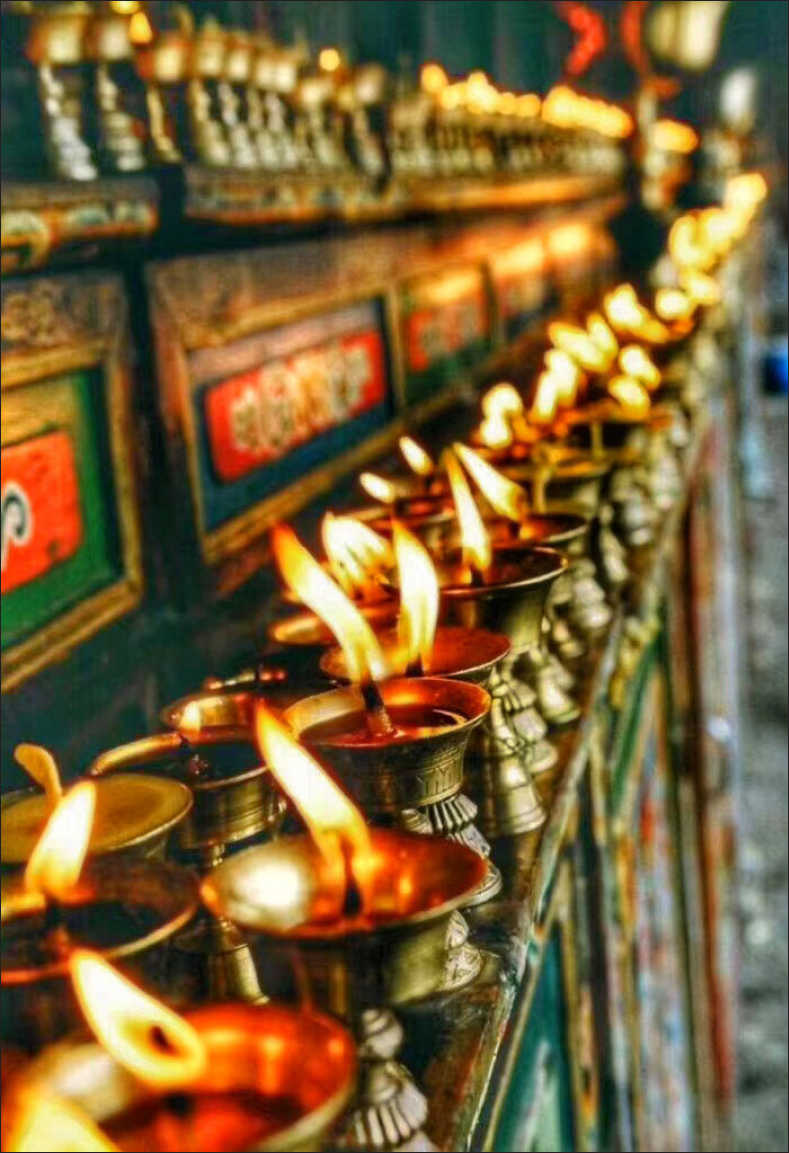
疫年当中的随记
1、
无法活过这个春天是什么意思?
无法活过这个夏天是什么意思?
无法活过这个秋天是什么意思?
无法活过这个冬天是什么意思?
无法活过2020年的三月是什么意思?
无法活过1959年的三月是什么意思?
无法活过过去是什么意思?
无法活过现在是什么意思?
怎么活,才能活过一天又一天?
而不是,就像是,从来没有活过?
2、
我什么境况都想到过
但就是没想到
会把自我囚禁这么久
这么久,窗外昨天阴霾浓郁
今天晴空万里
前天暴风雪
从高高的住所往下看
往左看,往右看
禁闭自己的当然不只是我
这个突然露出真相的世界
连魔王也无能为力
我之前以为这都是虚构
譬如地藏菩萨对地狱的描述
只为教化众生,却原来是此时
是此地,而之前无非虚妄
“把你的手伸给我一会儿。握在
我的手上……紧紧握住。时间就是我们
以为时间就在我们身边。”[1]
3、
在这个时刻打开一部经书
在这个时刻要为无辜者祈福
在这个时刻,好似从未有过的慌张
人们害怕疾病,为什么不怕饕餮?
有时候,命运会化身为一场瘟疫
但每次,它都名叫因果报应
每个动物都有自己的食物链
什么都吃肯定出问题
4、
我们不吃鲁[2]是对的
吃了鲁会得几百种病
禁忌很重要,贪心不足蛇吞象
更坏的人,一如既往,忙着封口
希望无人是孤岛
或近或远,都得到真正的安慰
而今天,在拉萨,十三岁的德色
第一次来了月经
5、
天花的藏语叫拉仲[3]
意思是什么——
神撒下的花瓣
还是,神留下的印记?
那么这个瘟疫
又跟什么有关?好像
无法以隐喻的方式命名
唯恐泄露了天机
6、
惊动了我威猛的护法神在大地上缓缓起舞
却也戴着浅蓝色的医用口罩
一个带气阀的N95从空中徐徐落下
犹如大人物的空口无凭……
7、
以火焰般的女神班丹拉姆起誓:
目睹烈日穿透高悬暗屋的唐卡,
必有深意须更多的人铭记,
而不是沉默无语,或者渐渐失忆。
以五世达赖喇嘛的秘密愿景起誓:
你对雪域的呼唤,即是感召。
而瘟疫围拢不肯散去的事实,
这古老的惩罚,这屡屡无获的训诫。
8、
菩萨多面救众生
俗人多面为自己
双面人甚至多面人到处都有啊
结下果实累累犹如伤痕累累
菩萨真的很辛苦
9、
有的人过于恐惧
有的人过于不太恐惧
但众生的恐惧
都盘踞内心
化作铁石——
这是铁石心肠的由来吗?
唯有自害害他吗?
帝国的胃口真大!
10、
骨子里的怯懦
掩饰不住的话
伺机而动的它
就会日益霸凌
在这交手的间歇
更凶的病毒出没
它们或是最大赢家
它们:长着纳粹的脸
(……在假想的避难所
容我欲言又止
小心翼翼地隔离
如同呵护身份)
11、
听见了吗?它命令你屈从
否则会被污名为病菌
生如蝼蚁,蝼蚁也是众生之一
可来不及隐藏就会变异
不,最后的尊严还是要守住
不能扔入粪坑
12、
边界有两种:一种是地理的
一种与精神有关
怎么去往边界呢?
要冒着什么样的风险呢?
一旦置身于边界
日夜经受的折磨无人知道
13、
从她的目光犹见菩萨的身影
从她的声音听闻三宝的真言
从她举在额头的供奉手印——
那是对喇嘛的承诺
而我更想有一双前世的眼睛
这样,就能看见废墟的前生
看见选中的天葬场的前生
以及,森嫫[4]幻化的祖国……
14、
仅仅三个月的病疴
仅仅三个月的渐入膏肓
仅仅三个月,就走了
而前年夏天,我们在色拉寺的茶馆
喝着甜茶,吃着博图[5]……
我仍能看见她慈祥的笑容
15、
在色拉寺的那些巨石上
依傍着转经路的那些巨石上
用白色的颜料
画着一架架梯子
大大小小,阶数不等
竭力地向上生长
升向解脱的天空
哪一架梯子是我的?
16、
在渐渐暗下来的光线中
那散落在民居里的
曼陀罗的金顶啊
会突然地格外明耀
如同被某道夕照眷顾
反射出令人惊讶的光芒
瞬间即逝,如梦幻
是运气,仅仅属于
久久地,凝视真相的人
17、
深夜,整个城市
模糊难辨,如在下沉
视线往上也看不清
群山的轮廓,仿佛
全都隐入某个猛兽的口中
那样,就会有安全感吗?
毕竟黑暗很长
是的,我说的是拉萨
我总是以挣扎者的目光
远远地,望着拉萨
18、
我需要一对明确的翅膀
使受困的自己一跃而起
不,是飞出去
有了翅膀
就有了自由的可能
自由不属于断翅的鸟
逆流而上似的
逆风而飞,而飞
回到雪山环绕的失乐之地
19、
每日呼唤,每日睁开眼睛
即呼唤,自然而然地
愈来愈迫切地——
药师佛啊,蓝色的
晶莹剔透的菩萨
请救我们!
20、
帝国的边缘人
帝国的陌生人
也是……帝国的敌人?
外强中干的他啊,需要这个幻觉
一个声音远远地传来
反而是受难者在说:“临皆,临皆[6]。”
21、
读到一句非洲谚语:
“斧头所遗忘的,
树木会记得。”
但树木若知
斧头意味着什么
就不会授之于柄
斧头闪闪发亮
像是庆祝树木的消失
好吧,我们会记得
22、
远远近近的有些人
遗传了祖先漂亮的容貌
可祖先没有把无畏的精神
化作基因传给每个后裔
这比所有悲哀的总和还悲哀
以致那寄生于侵略者
而不停地弯腰吐舌的人啊
野心与私心随年龄滋长
空有了祖先漂亮的容貌……
23、
我这样恸哭,连自己都震惊了
我这样恸哭不已,不全因为离世的人
而是因为活着的人,一夜之间
她痛苦得脱了相,令我惊骇
没有至亲的往后,该怎么活?
如我失去父亲的那年差点熬不过
猝然间给自己造下的创伤
至今还痛,不对,愈来愈痛
24、
“好像陷在这里了。”
“陷在这里?”
“对,陷在这里了。”
“那怎么办?”
“我让你走,你就一定要走。”
“那不行,我们要在一起。”
然而除了病毒
他们也自带病毒
就像是来自瘟疫之城的物种
虽然长着人的面孔
举止间的反常
并不像正常的人类
25、
索性吃了一大片泡在酥油茶里的拉拉[7]
味蕾就沉浸在一头牦牛的味道中
青草,咀嚼;奶汁,石块似的干奶酪……
但这个月我不会惦记它的肉
这是藏历四月,戒荤有益于身心
今夜我也不关心人类
东西南北,人的牙齿比刀刃锋利
这样吧,万物众生都放过彼此
你我各自睡个好觉很重要
26、
伊安[8]找到的一棵枯树
在伊安的岛上
复活了
夜空下,那得到授记的树
那新生的叶子
随风摇曳
那白色的叶子
那写着名字的叶子
随风摇曳
那写着藏文名字的叶子
那纸裁的叶子
随风摇曳
那是165个藏文名字
那是165个献祭的藏人
风的前生是火焰
火又燃起
我们五体投地
风中放声念:“喇嘛千诺……”[9]
27、
疫情不退的夏夜,
群情汹涌的各地,
惟有饕餮者从容自如。
濒临灭绝的某些众生,
各有独特的面相。
一个行迹不明的陌生人,
突然发了一条推特给我:
“不管怎么伪装,
都改变不了你
红色的革命基因。”
困倦的我顿时兴奋,
就像是暴露了隐秘的身份。
我笑得眼泪都出来了,
一只手举起杯子,
但冰镇的啤酒已尽。
28、
名字如此重要
请你,记住我们的名字
让我,记住你们的名字
这是起码的平等
毕竟风月同天
29、
……清洗现场,飞快地
再打造一个似像非像的现场
让你去的时候指给你看
格外亲切地,屈尊纡贵地
把这样那样指给你看
你一下子就爱上了这个现场
比乐土更像乐土本身
你不禁泪眼迷离地
唱起了红色音乐剧[10]中
那首蒙古调的赞歌:
“从草原来到天安门广场
高举金杯把赞歌唱
美酒飘香鲜花怒放
歌声飞出我的胸膛……”
啊,我们的空空的胸膛……
一个个的,失魂人……
30、
居住帝国的首都半年
居住帝国的边疆半年
就像移民或流亡者
但轮替的空间日益逼仄
在故乡的时间越来越短
你无能为力,无所适从
仿佛侥幸地活着
侥幸地过了一天又一天
只希望被帝王和走卒遗忘
31、
“双面人;口是心非者;你们不羞愧吗?”
“叛徒;俄洛巴[11];你们不准跟她来往。”
“熊猫;老大哥……你们看得见地狱吗?”
“还有你,别提贵族血统,你谄媚的样子很卑下。”
“看这不毛之地,看这些野蛮人,多亏我们的解放。”
那几个穿中山装的男人以嘹亮的宣告使空气凝结
“哦不!”你在心里继续重复着他们的语言
将先前的低语换作这一句:“你们才是野蛮人,
六道中的下三道,恐怕很难得解脱。”
你不禁微笑,但他们可能以为这是认同和感激
s32、
不,我们没有穹顶,只有屋顶
而这个屋顶,太大,又太低
将穹顶完全挡住
仿佛它成了穹顶
比黑夜更夜的黑
真的,就这一个颜色
我并没有渲染,总之周围人们
不得不将屋顶当做穹顶
习惯了暗无天日的生活
以至我看见穹顶这个词
竟泪流满面……
33、
灾异的烈焰四起
会玉石俱焚吗?
然而顽石不会
美玉却易殒于火中
顽石强硬,自以为是
擅长以火助攻
但玉是美好事物
终被顽石尽毁
正所谓他山之石
不停击打我的玉
譬如昨日沦陷的故土
今已遍布种种劣石……
34、
烈日下,走在渐渐嘈杂的街上
走在以口罩遮面的人群中
街道两旁,尽是藏在阴影里的房屋
应该还有很多人将自我封闭
有时,他们中的一个会靠近窗口
投来匆匆一瞥,或久久凝视
他或她深深俯身的样子
既像欲坠的犹豫,更像求救的暗示
我差点失声祈求观世音菩萨
张开怀抱,毕竟这是一个佛教徒
应该做的事情……
35、
陷入日甚一日的纠结中:
深深眷恋的、深深依赖的亲人
有的在故乡,有的在这个或那个异乡
我如何获得分身之术
如何规避不可测的危机四伏
与各个共度无可替代的时光?
啊,我的内心对谁都不舍
如同在泪水中的浸泡
我们在这一世的时光越来越少了
不由得,睡得越來越晚
睡眠越來越短,似乎是
就可以尽量地延长我们在一起
36、
众人的记忆如何才能恢复?
譬如一个不得不失忆的人
在某个政治正确的房间
得到了后果不明的医治
那渐渐恢复的过程
有时候畅通
有时候堵塞
然后会像山洪一泻千里
令人满怀惧意
更像是发生在广场上的谋杀
过于可怖的真相被众目共睹
又被选择性地遗忘
终究会说出口
但也毁掉了活下去的勇气
37、
做一个确定身份的人,与
写一首好诗的难度几乎一样
因为命名是首要的问题——
你是“藏人”?“图伯特人”?
还是“博巴”[12]?你的故土是“西藏”?
“图伯特”?还是“博”[13]?
……似乎雪在下,雪越下越大,遮蔽了道路
似乎火在烧,火越烧越猛,遮蔽了天空
化雪的时候最冷,泪水也会冻结
扑灭烈火的时候,灼伤的不只是皮肤
远远地,远远地,远远地,传来
六世达赖喇嘛的证悟之歌多么慰藉:
“写出的黑色字迹,水和雨滴冲没了;
没绘的内心图画,要擦也擦不掉。”
38、
不肯相信他已离世多年
他的容颜仿如旧照渐渐褪色
而我,也活到了他离世的年纪
幻觉啊……以为自己仍在青春时节
幻觉啊,以为自己能够掌握命运
幻觉,而这样的幻觉恐怕也是需要的
“喂,打算什么时候死呢?”
“啊!怎么说话的?”——
这个凌晨被一个陌生之声惊醒
39、
愿意是这样一个收藏者:
收藏老照片的裂痕但不做任何修补
收藏深夜来不及熄灭的余烬
留着最冷的明天生火取暖
收藏失踪者不敢大放悲声的饮泣
那或是寻找曾经活过的证据
收藏不可告人或者无可告慰的秘密
那通往人性的深渊可能是救赎之道……
但不愿意收藏愚蠢,那些执着的
拒绝智慧的,却自鸣得意的愚蠢
比作恶多端还无可救药,很难原谅
40、
突然觉得拉萨更像一个遗迹
残骸;废墟;亡址……
“修旧如旧”,他们说
挖挖挖,拆拆拆
修修修,盖盖盖……
使得这里像一个巨大的工地
修旧如旧怎么可能?
你都破旧了,又怎能立新?
你立的新,也是虚伪的替身
41、
记得那个初秋的正午
在哲蚌寺的转经路上
一条流向山下的溪边
她轻轻地,反复地
将几枚锃亮的铜
浸入流水中,又
从流水中提起
那铜,刻有菩萨的形象
刻有菩萨说的话
那铜,用结实的绳系住
像笔,以水为纸
在水上书写祈祷
更像印,使流水瞬间转变
那蜿蜒流向俗世的水啊
印满菩萨的形象
印满菩萨的话
而这,你会笑徒劳
因为你看不见
而这,我更信不疑
因为我看得见
42、
将地名写入诗中
将本国的地名写入诗中
将失去的本国的地名写入诗中
将本质上永不失去的本国的地名写入诗中……
“神奇又真实,”她大声地说
“一个避难所,”她转为轻声地说
进而联想到:乌托邦的反义词,时轮金刚的香巴拉[14]……
一滴滴泪水也真实,却不神奇
我已经竭尽全力地勇敢了
但在五毒弥漫人间的时刻务必具足信心
发四弘誓愿的嘉瓦仁波切的声音响起了
也请你聆听,为一个好的来世
43、
但是直到最后,即使无常如期而至
我们必须说实话,说实话,说实话
没有一个人有权力欺负另一个众生
没有一个原因不会成为另一个结果
请呵护那风中的烛火是末日的希望
请珍惜那瞬息即变却并不太多的同理心……
2020年2月至12月,疫情中,
写于北京、上海、屯溪。
[1] 卡佛的詩《透过树枝》中的诗句。
[2] 鲁,ཀླུ་(lu),被认为是地下世界(地穴和水域)的掌控者,汉语勉强被译为“龙”,但不准确甚至是错误的,因为在中文里并没有这一文化特质和概念。在有着苯教传统的图伯特文化里,众多生活在水土里、岩石里、森林里、地穴里的动物,如鱼、蛇、青蛙等,被视为兼具好运与厄运的鲁神化身。
[3] 拉仲:ལྷ་འབྲུམ་ (lhadrum),天花疫病。
[4] 森嫫:སྲིན་མོ་ (sinmo),岩罗刹女。图伯特神话称藏人人种系猕猴与岩罗刹女结合所生,传统地理观以譬喻的方式认为图伯特疆域即森嫫仰卧之地。
[5] 博图:བོད་ཐུག (bötuk),圖伯特風味的麵條。
[6] 临皆:སྙིང་རྗེ་ (nyingje),意为可怜。
[7] 拉拉:ལ་ལ་ (lal),牦牛乳做的干奶酪。
[8] 伊安:即 Ian Boyden,美国艺术家、诗人、译者。2021年春天与我合作举办线上展览 FLAMES OF MY HOMELAND: THE CULTURAL REVOLUTION AND MODERN TIBET。其中有我父亲拍摄西藏文革的照片;有Ian Boyden在枯树上挂满写有165位自焚藏人名字的纸片,以及这棵树在火焰中燃烧的电影;有我念诵自焚族人名字的声音;有我朗读写给尊者家族的老房子尧西达孜在几十年来化作废墟的诗歌,等等……
[9] 喇嘛千诺:བླ་མ་མཁྱེན་ནོ་ (Lama Khyeno) ,祈祷词,上师遍知,上师护佑。
[10] 指音乐舞蹈剧《东方红》,1964年中共为庆祝建国15周年演出的歌舞剧。
[11] 俄洛巴:ངོ་ལོག་པ་ (ngolokpa),叛徒,变节分子。
[12] 博巴:བོད་པ་ (Bödpa),藏人,图伯特人。
[13] 博:བོད་ (Böd) ,西藏,图伯特。
[14] 香巴拉:ཤམྦྷ་ལ་ (Shambhala),净土。
Photo credits
1, 2, 4, 7–25, 27–43: Photographs by Tsering Woeser.
3, 5: Details from the Sibu Yidian Guatu. Courtesy of Tsering Woeser.
6: Anonymous artist. Courtesy of Tsering Woeser.
26: Photograph by Ian Boyden.
1. Kṣitigarbha, one of the primary Boddhisattvas of East Asian Buddhism, made a vow to not to become a Buddha until all hells have been emptied. His descriptions of hell are particularly vivid.
2. “Through the Boughs” by Raymond Carver, in All of Us: The Collected Poems. In this poem the phrase “Time was” is the cry of birds.
3. Lu (ཀླུ་) occupy a special place in the Tibetan spiritual imagination. In general, lu refer to beings that inhabit bodies of water and can be both benevolent or malevolent, but they are also understood and respected as spiritual envoys.
4. lhadrum (ལྷ་འབྲུམ་)
5. Sinmo (སྲིན་མོ་), rakshasa, an ogre-like being. In Tibetan mythology, the Tibetan people descend from the union of a monkey and the rakshasi known as Sinmo. Traditional geography approaches Tibetan territory figuratively, imagining the land as the body of Sinmo lying on her back.
6. Bötuk (བོད་ཐུག) is a type of Tibetan noodle dish.
7. A kora (སྐོར་ར་) is a circumambulatory path around Tibetan monasteries and other sacred places.
8. Nyingjé (སྙིང་རྗེ་) is a Tibetan word meaning “have pity” or “poor thing.”
9. Lala (ལ་ལ་) is a type of dry cheese made from yak milk.
10. Ian is Ian Boyden, an American artist, poet, and translator. In the spring of 2021, he and I collaborated in the creation of the exhibition, “Flames of My Homeland: The Cultural Revolution and Modern Tibet” at Wesleyan University (co-curated with Andrew Quintman and William Fruct). The exhibition included several collaborative works including the film “The Birds Might Not Come,” in which Ian inscribed strips of paper with the names of the 165 Tibetans who have self-immolated. He hung them on a dead tree so they resembled leaves, and then burned this tree as I rhythmically recited their names.
11. Lama Khyeno (བླ་མ་མཁྱེན་ནོ།) is a prayer: the lama knows all, the lama protects.
12. “The red musical opera” refers to “The East is Red,” a song and dance performed by the Communist Party of China in 1964 to celebrate the 15th anniversary of the founding of the People’s Republic of China.
13. Ngolokpa (ངོ་ལོག་པ་) is a Tibetan word meaning “rebel” or “traitor.”
14. Bödpa (བོད་པ་), the Tibetan word for a Tibetan person.
15. Böd (བོད་), the Tibetan word for Tibet.
16. Shambhala (ཤམྦྷ་ལ་) means pure land.
17. Gyalwa Rinpoche (༧རྒྱལ་བ་རིན་པོ་ཆེ་) is the Tibetan honorific name for the Dalai Lama and means supreme “wish-fulfilling treasure.”